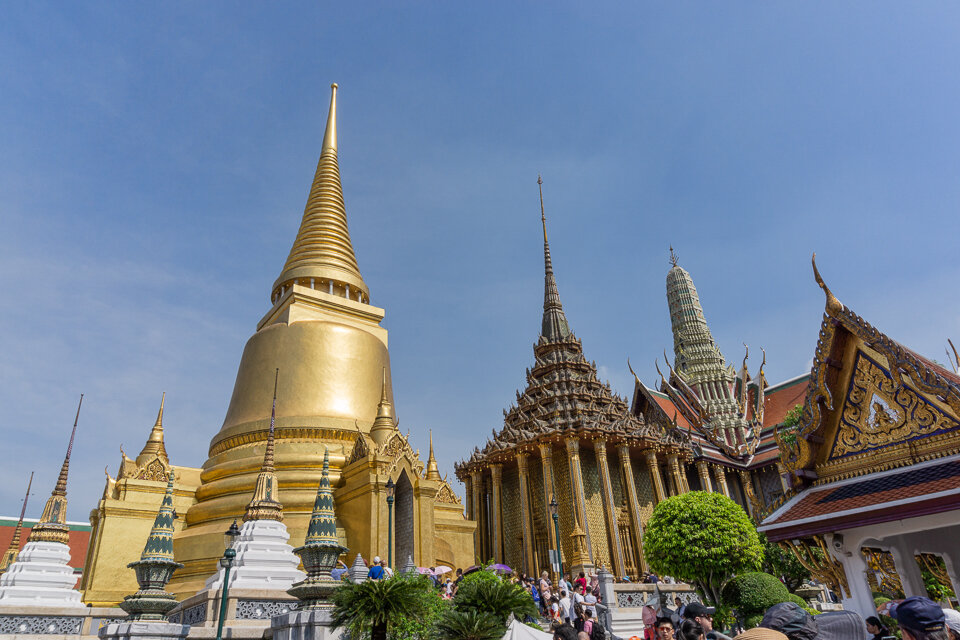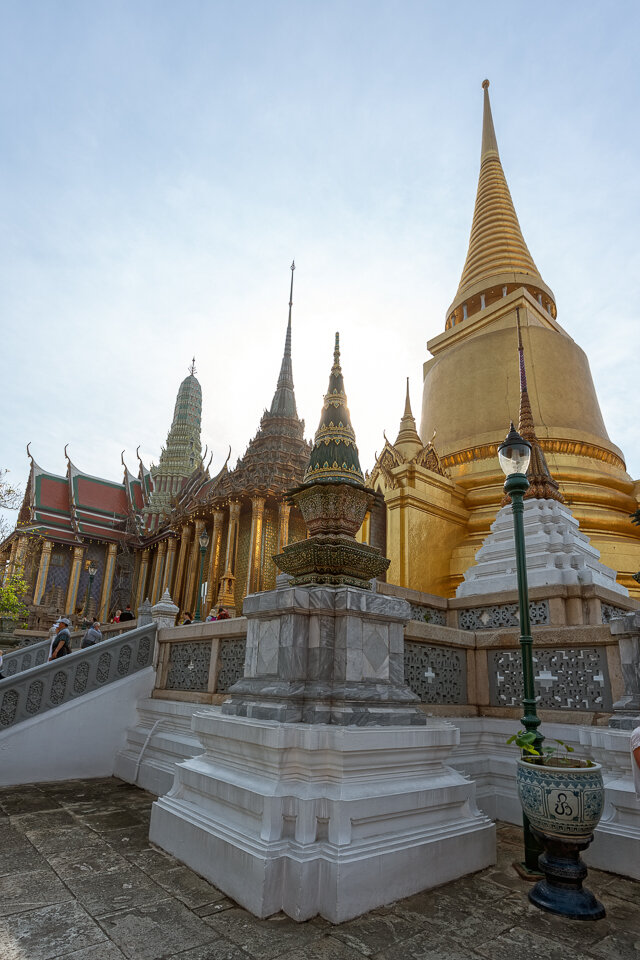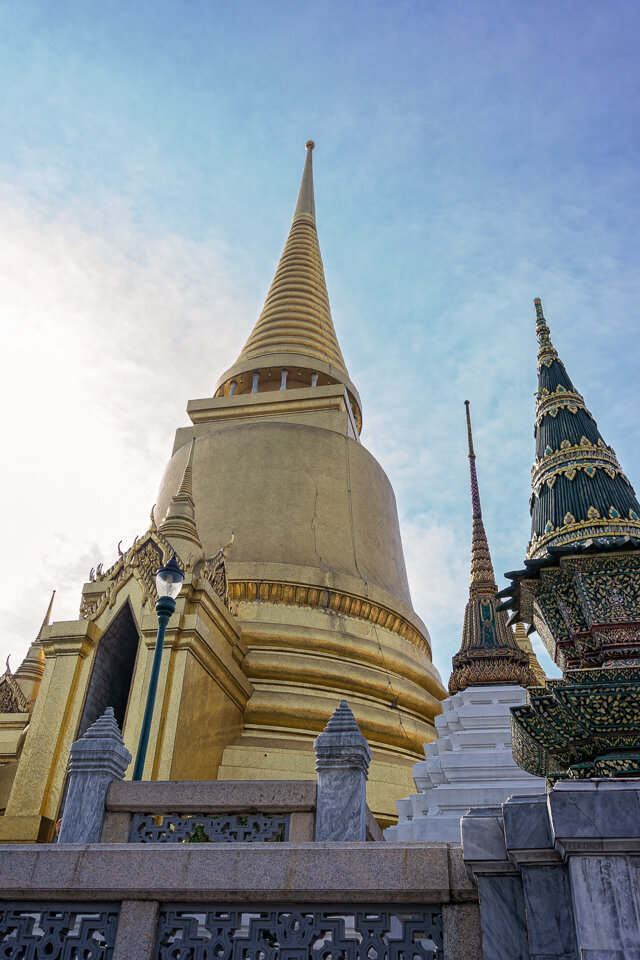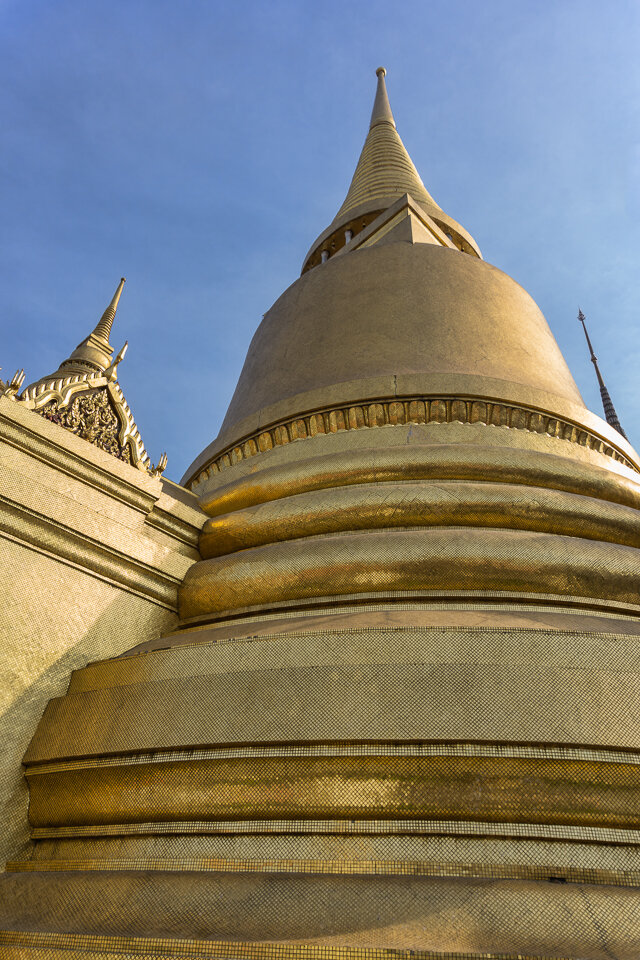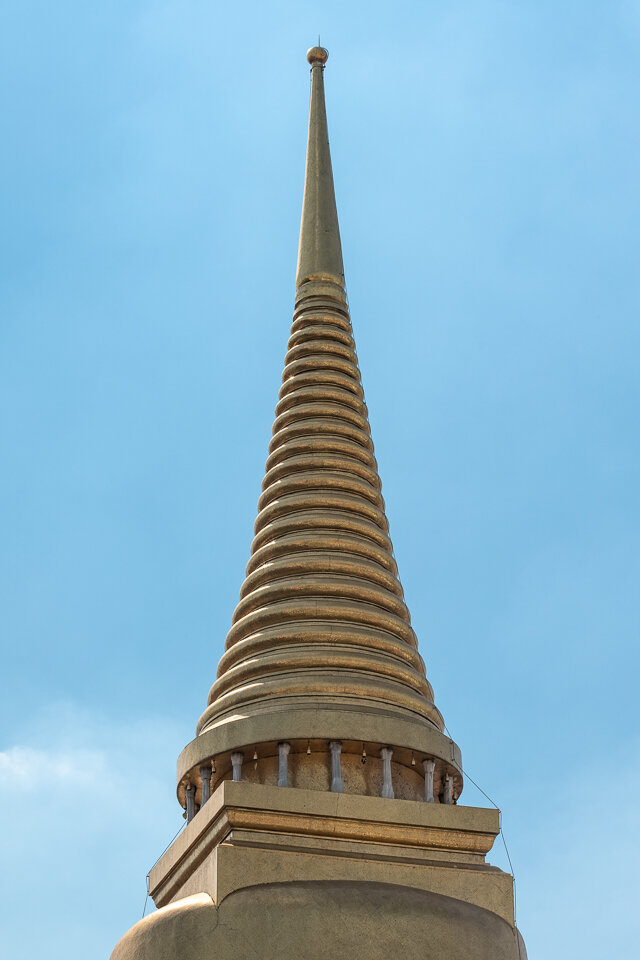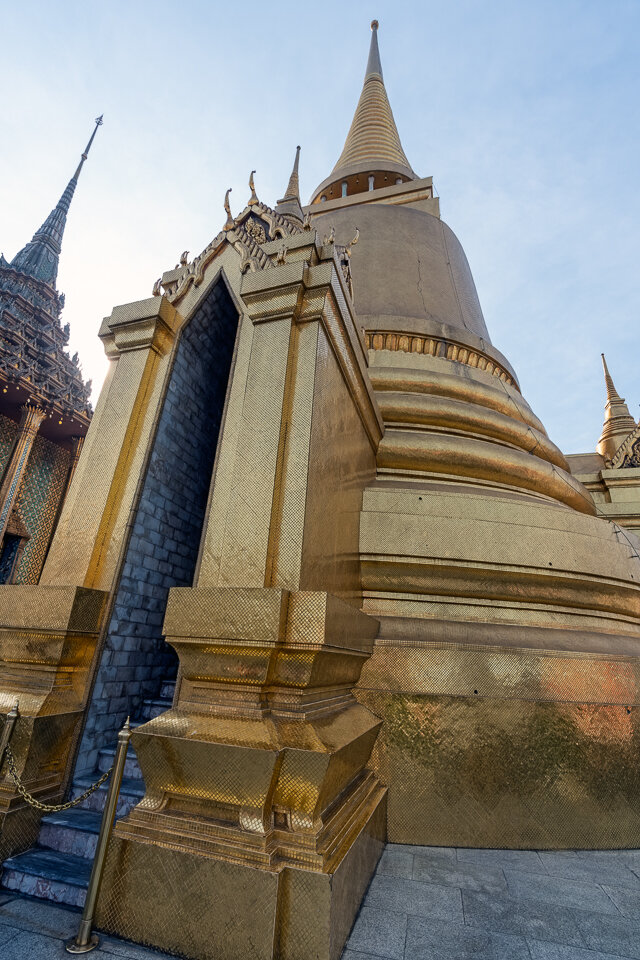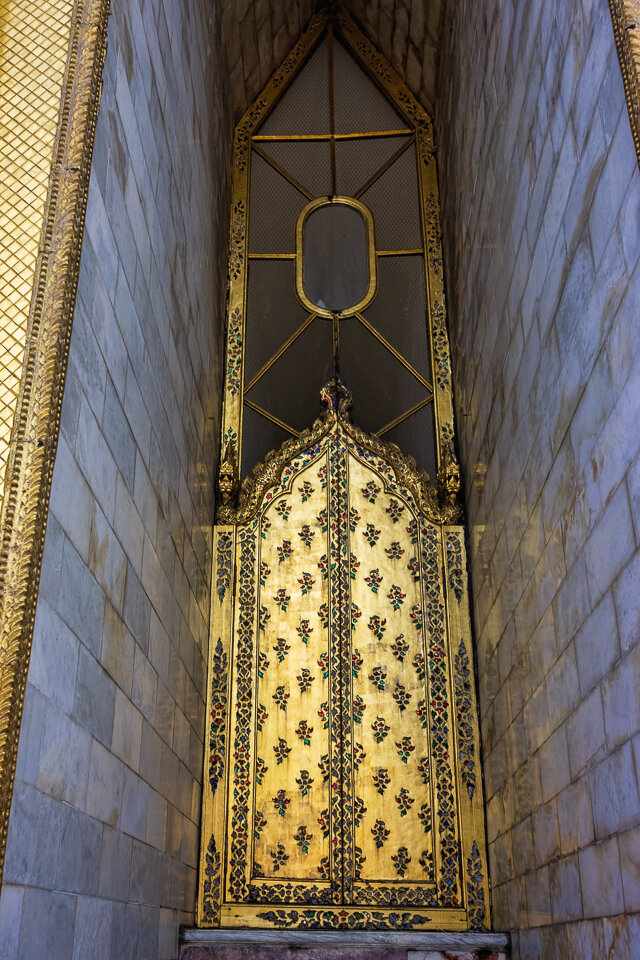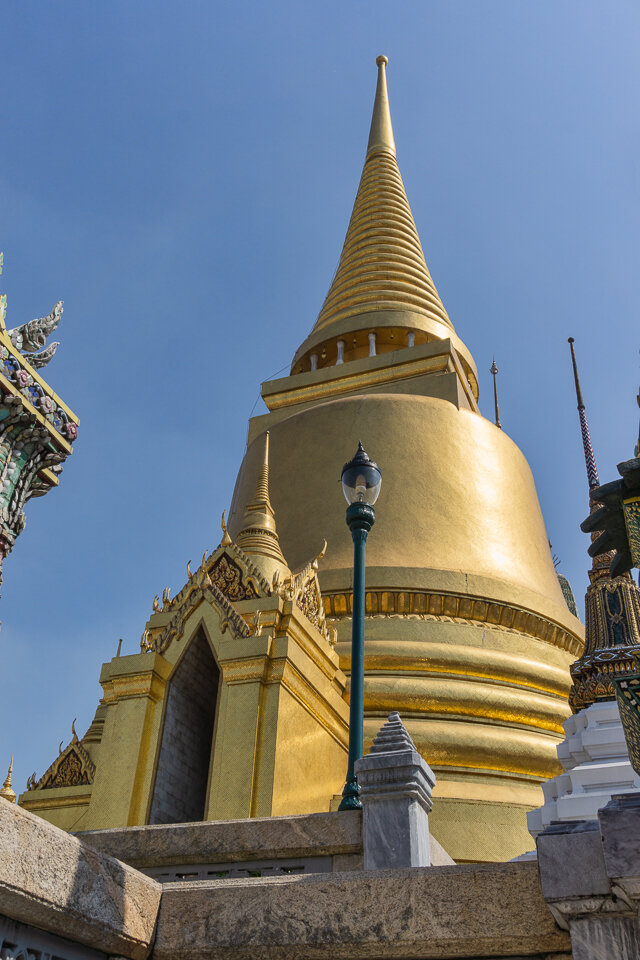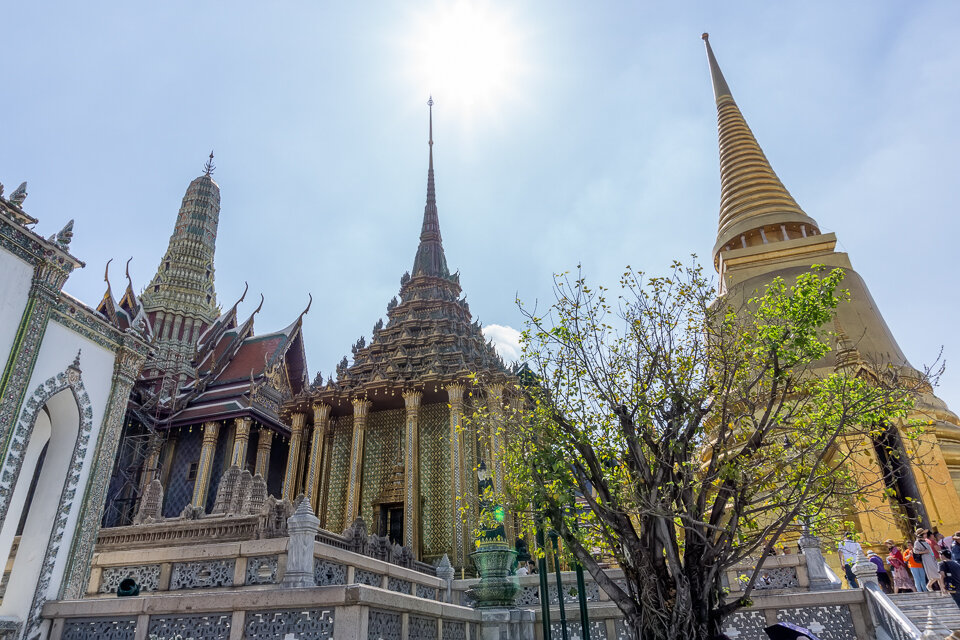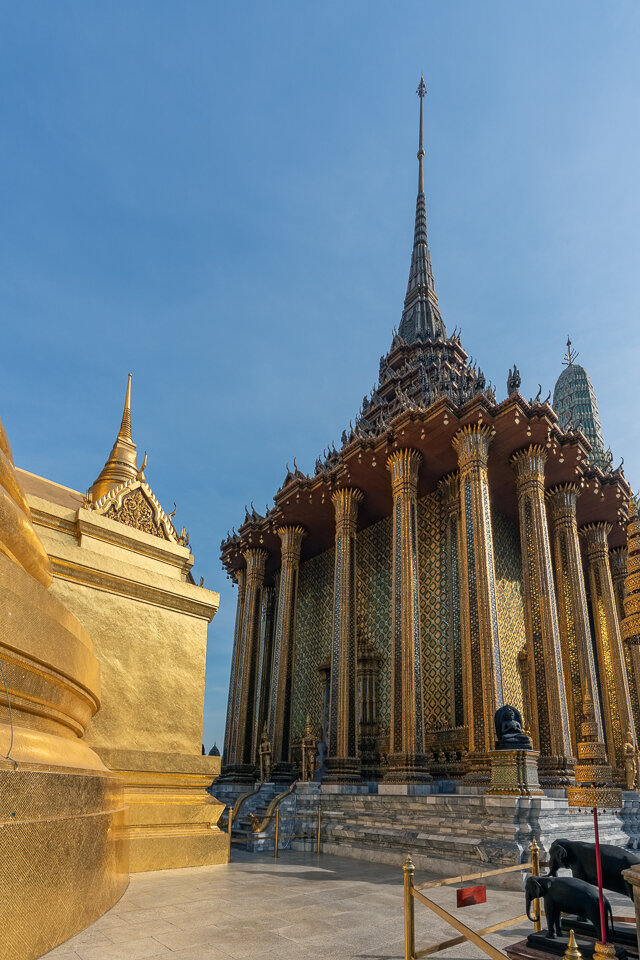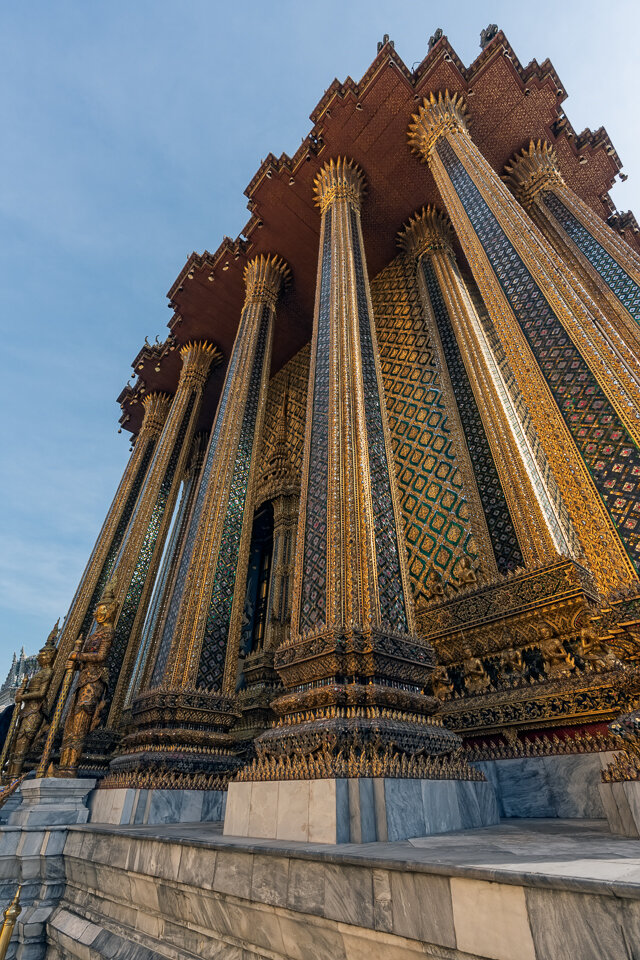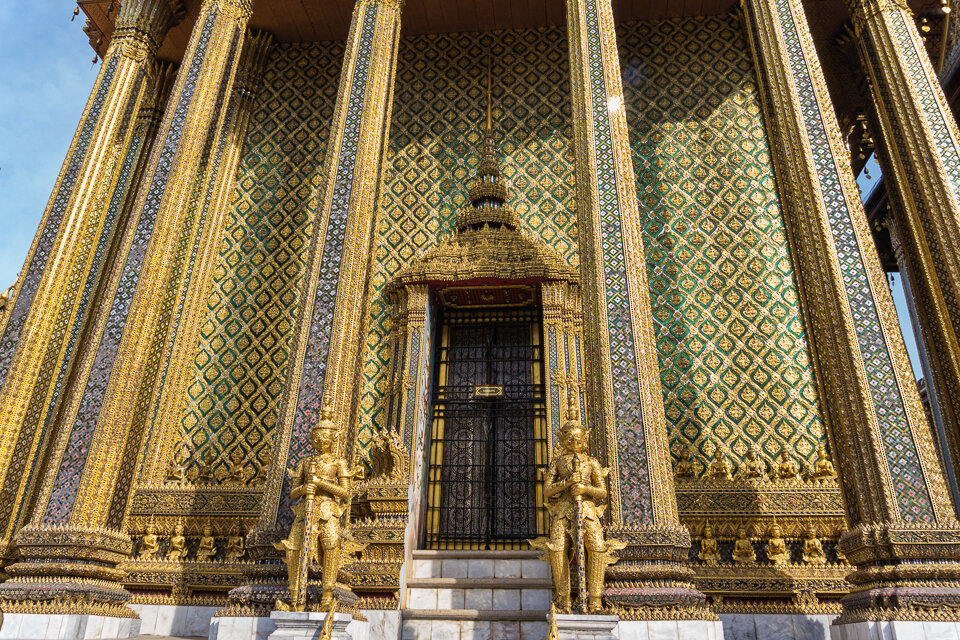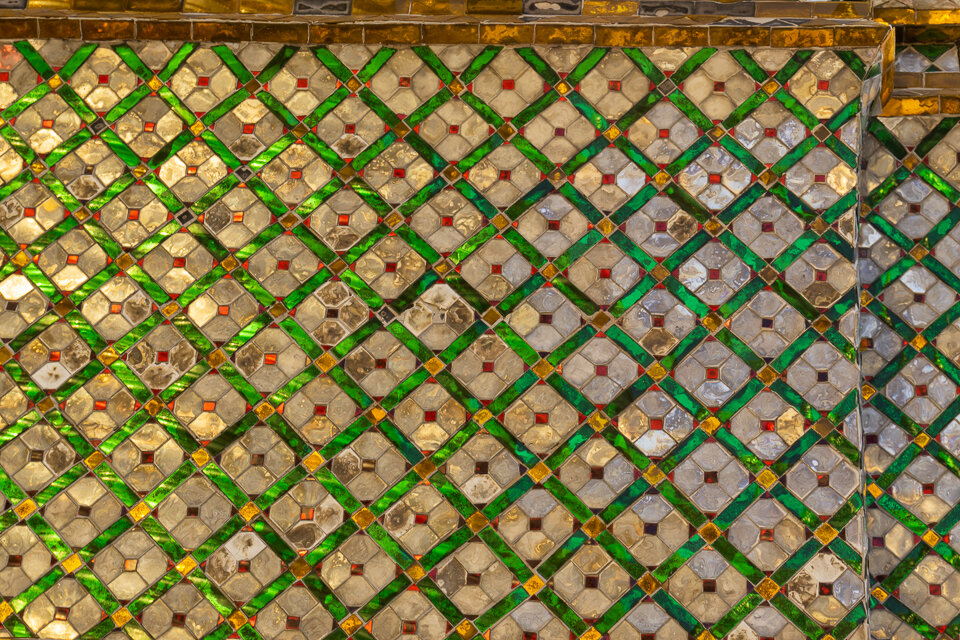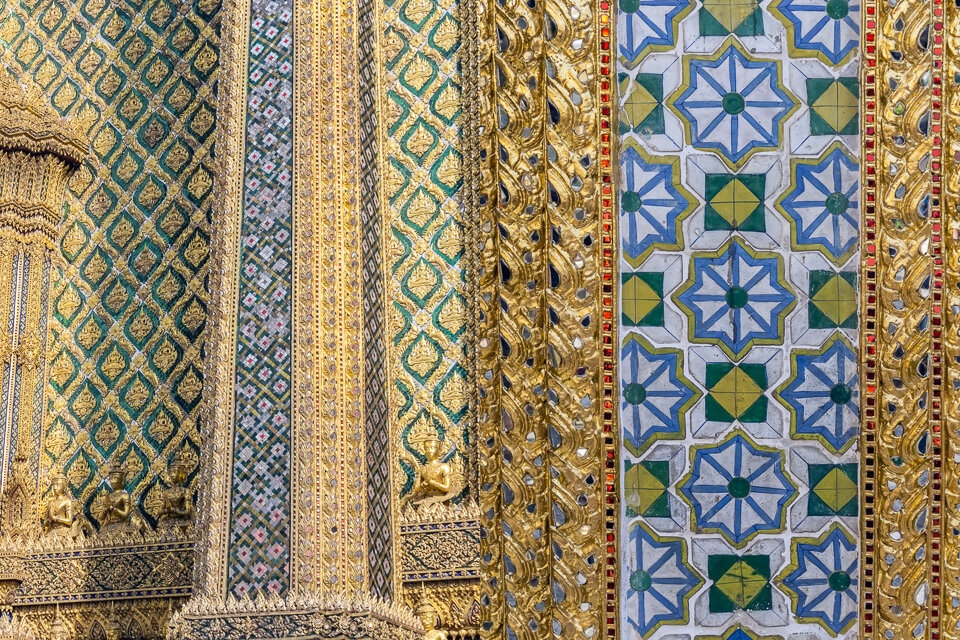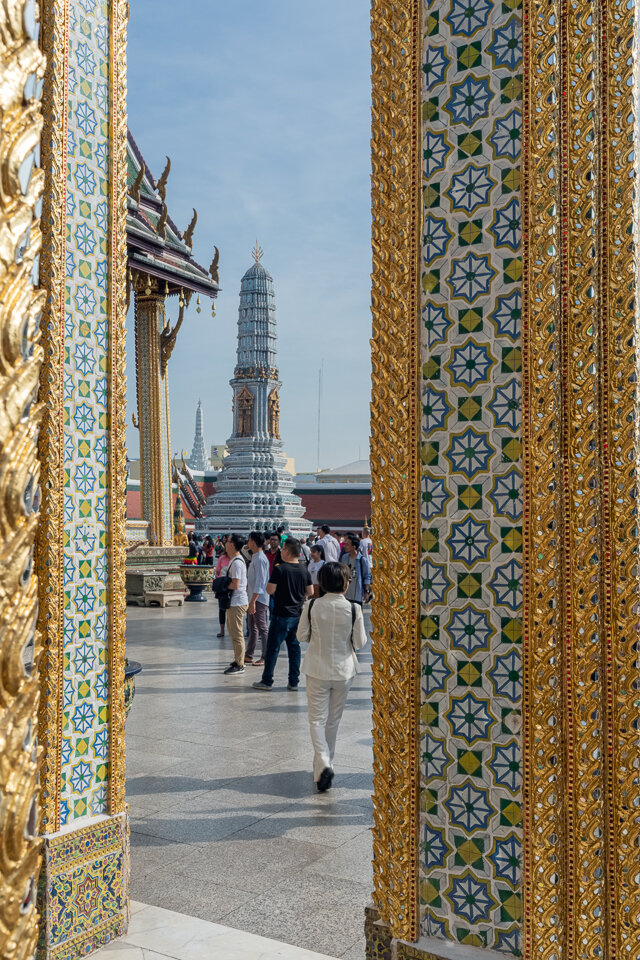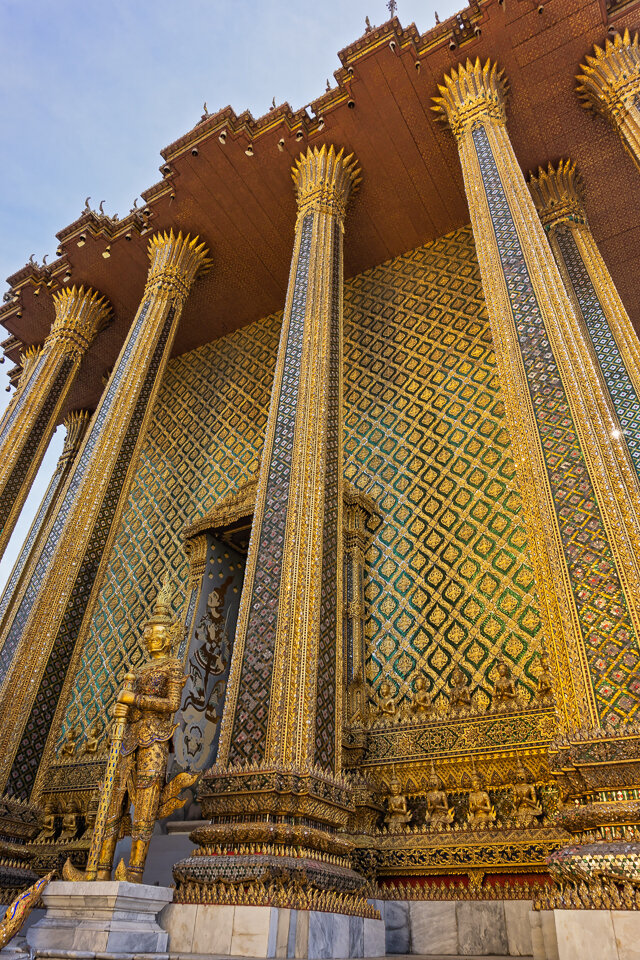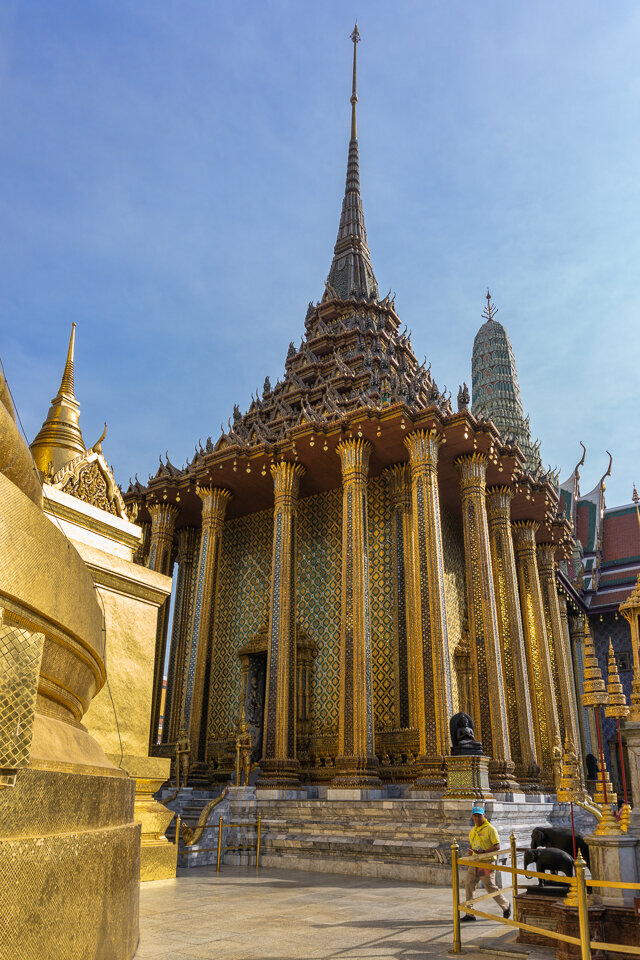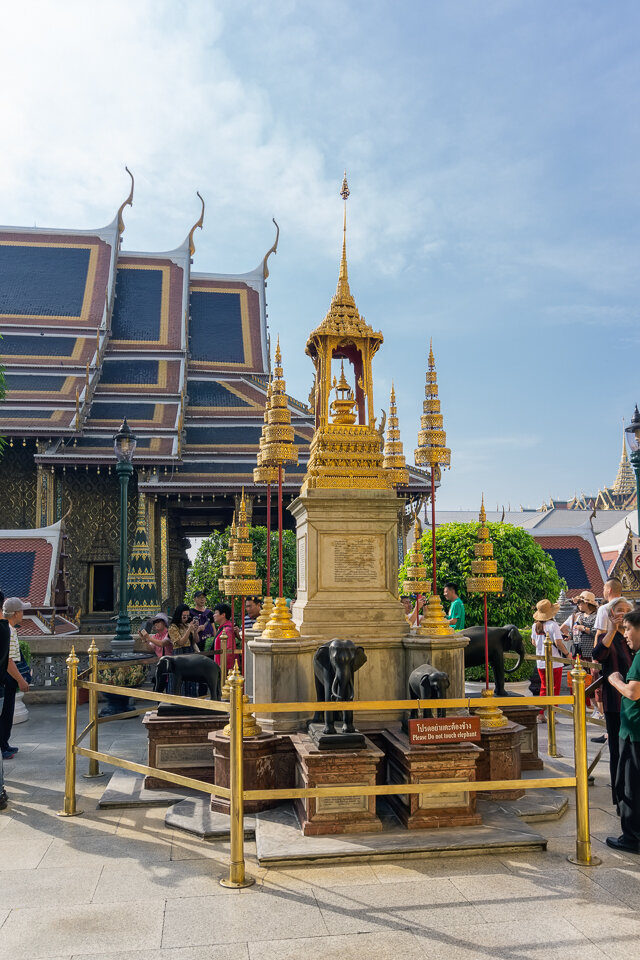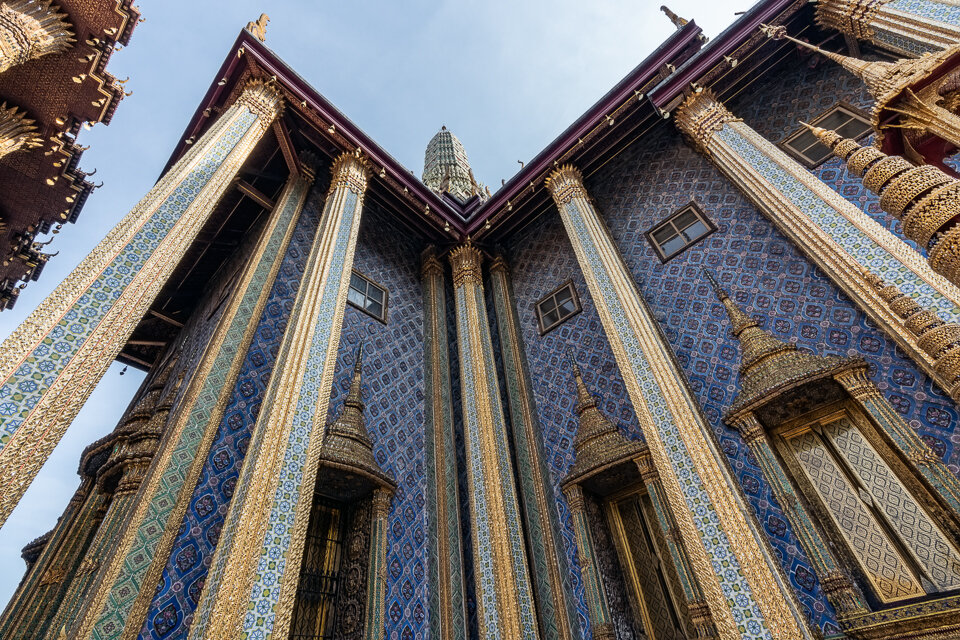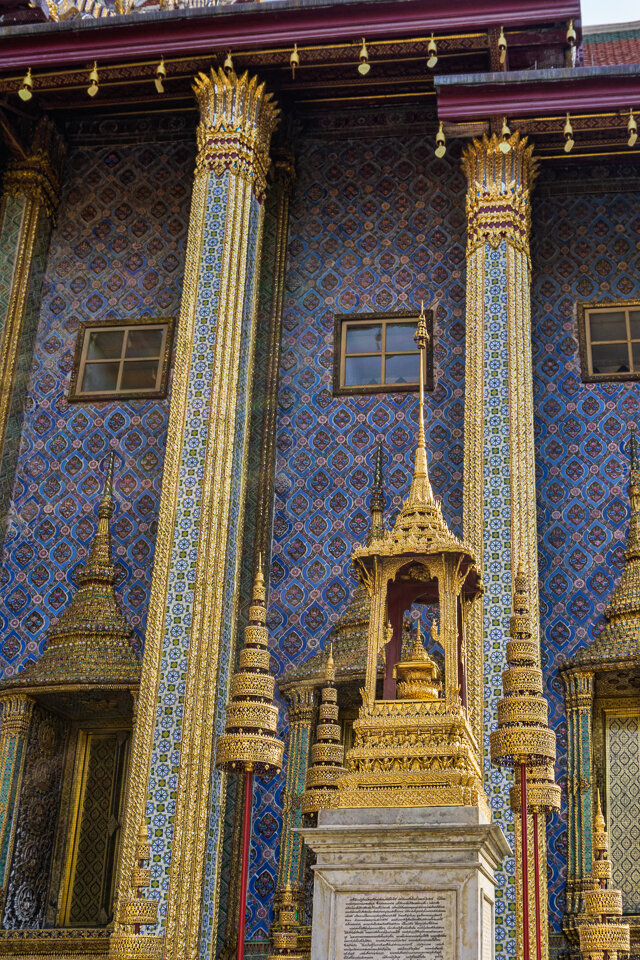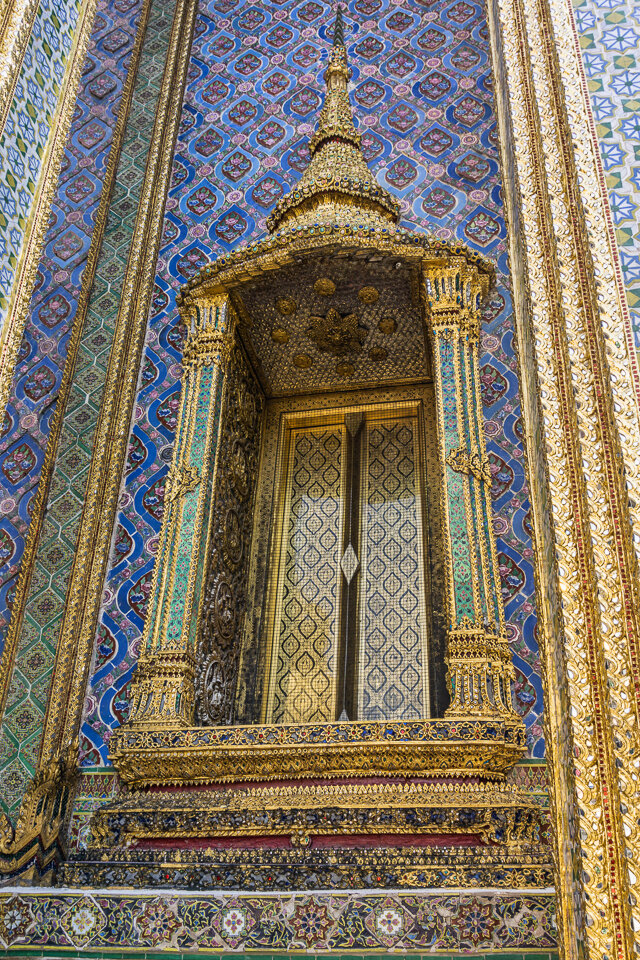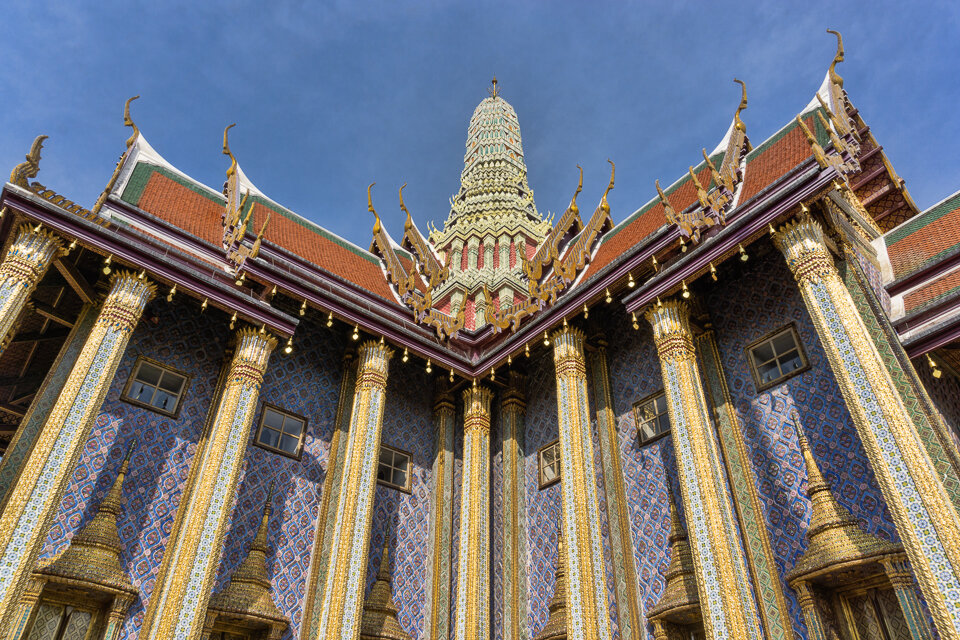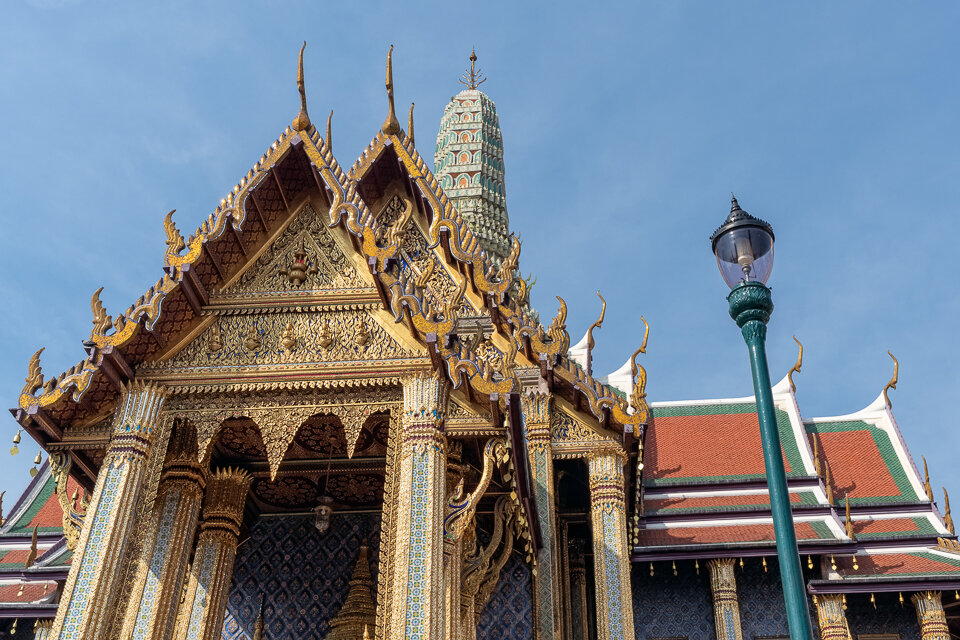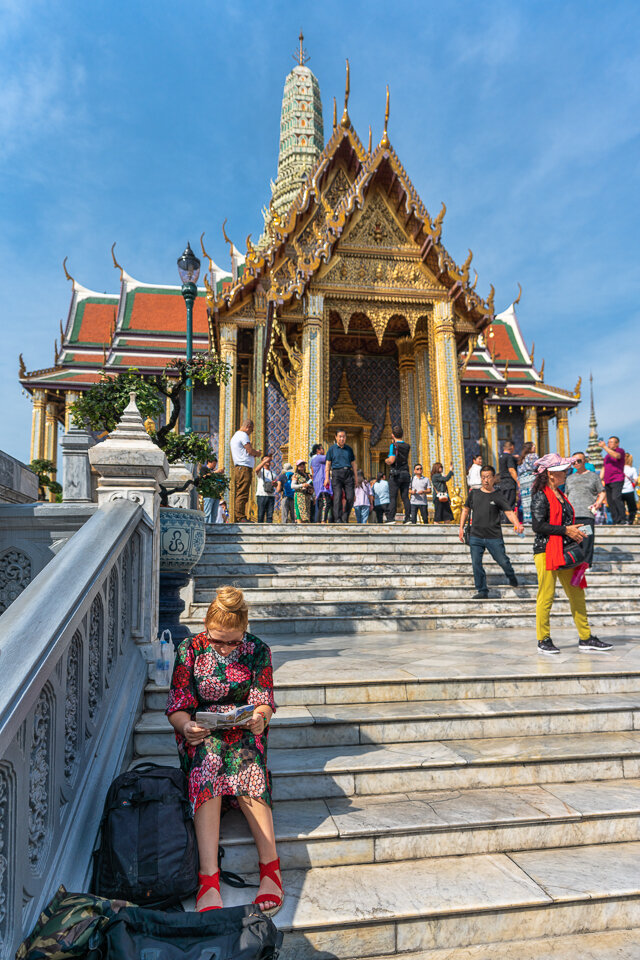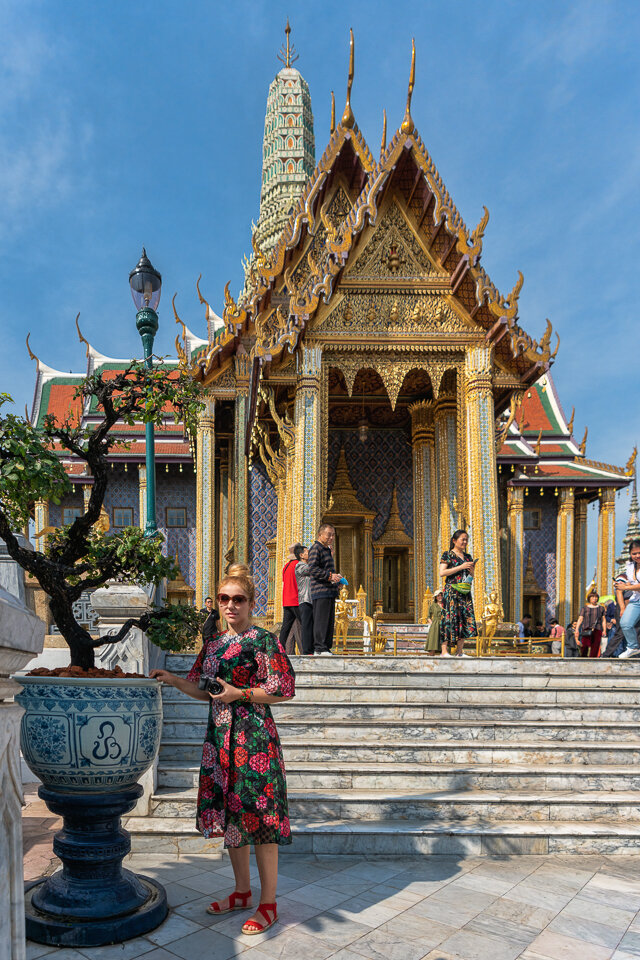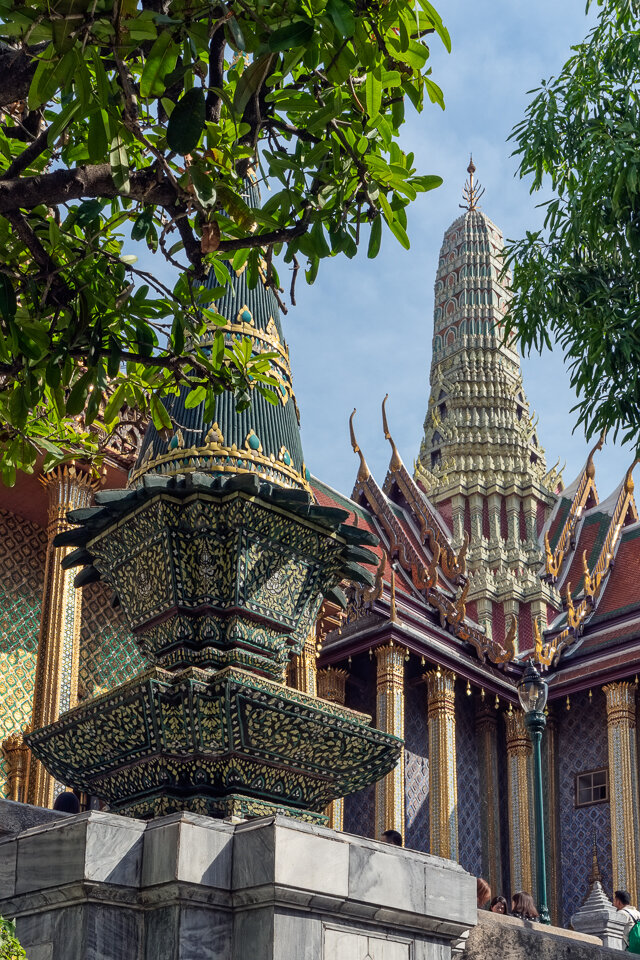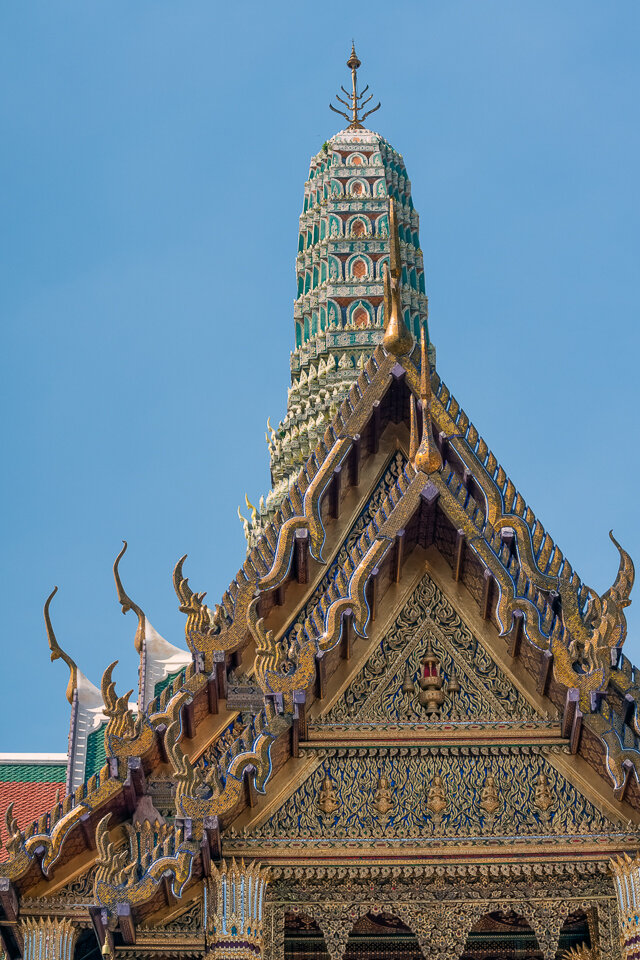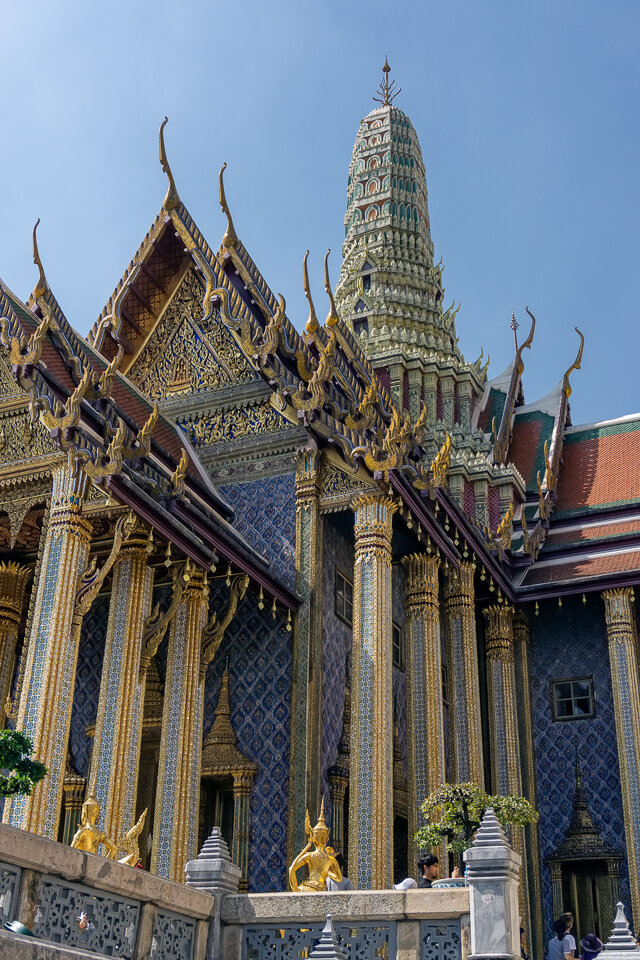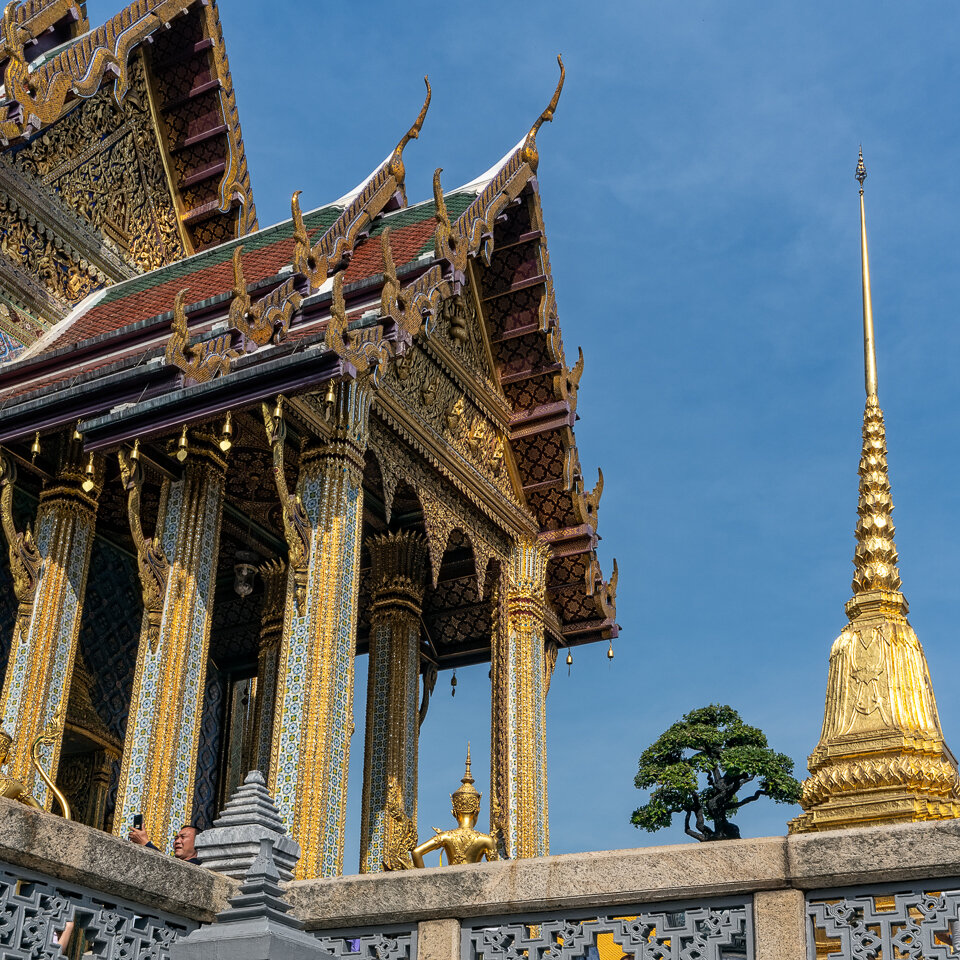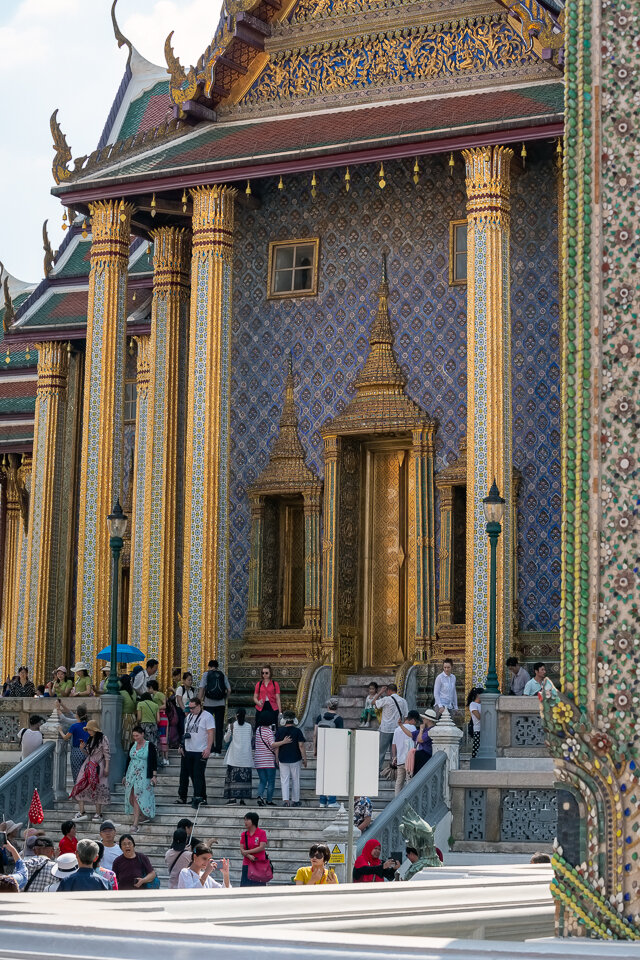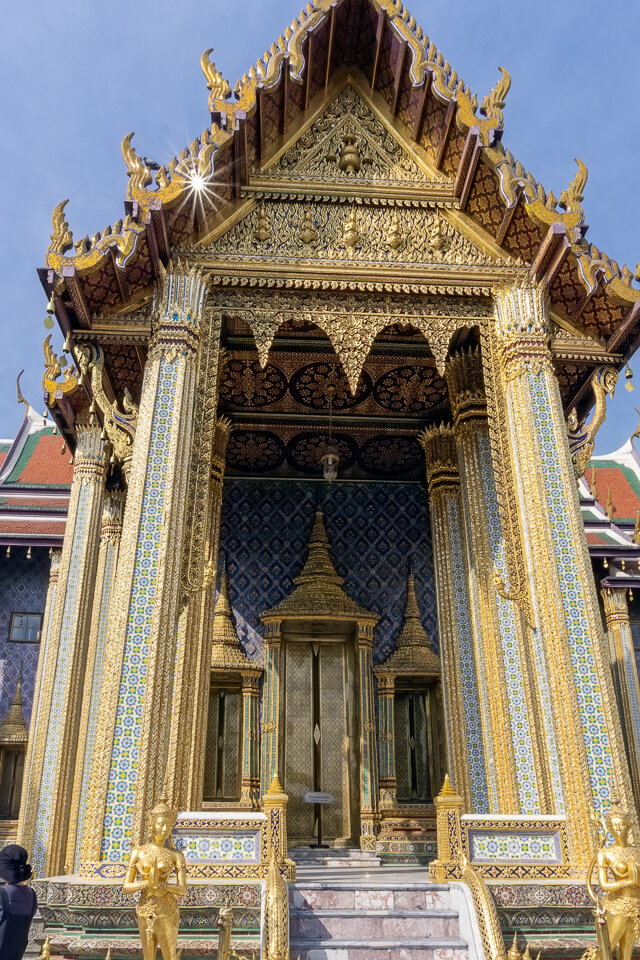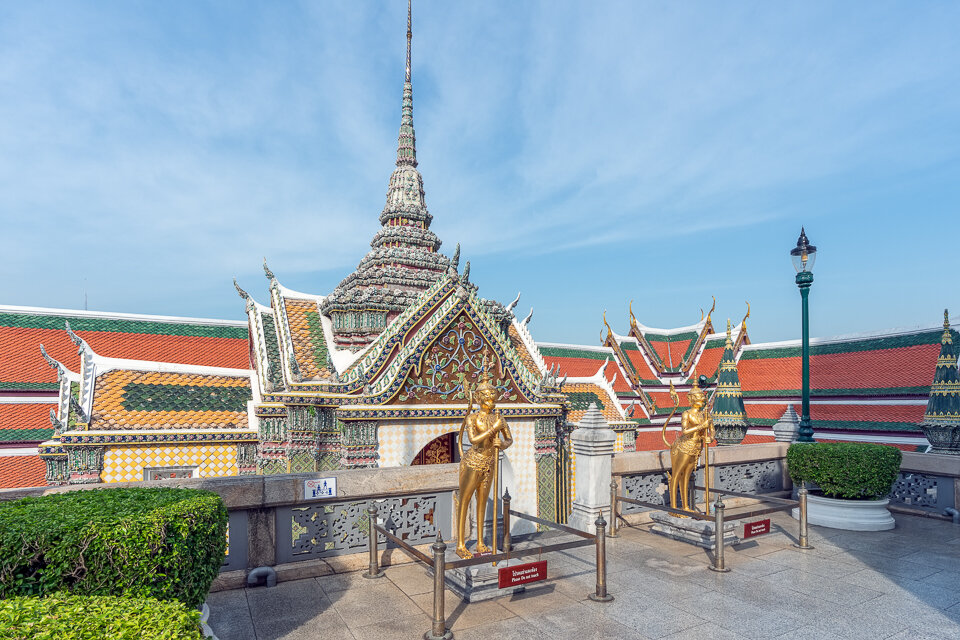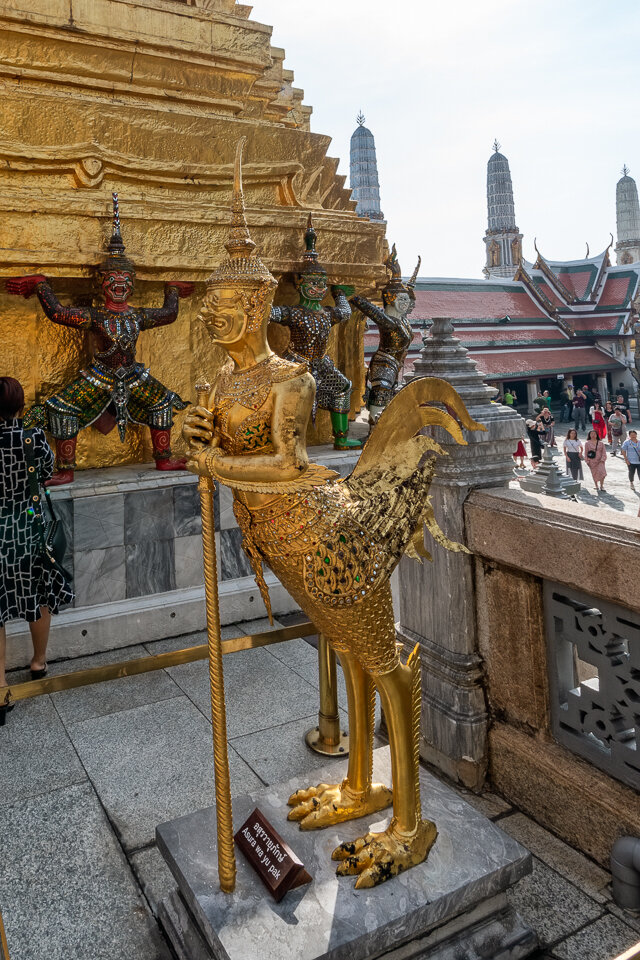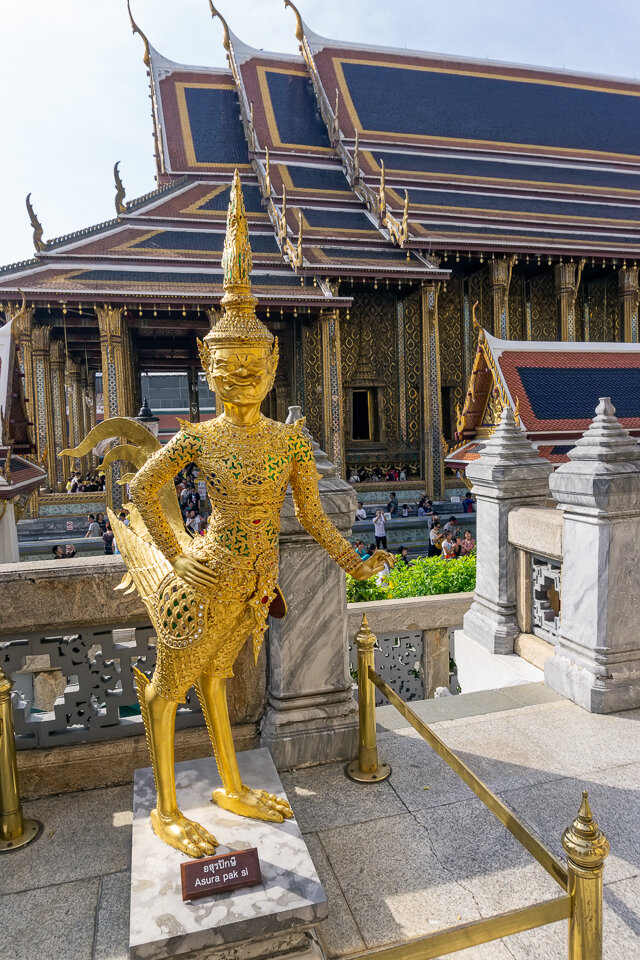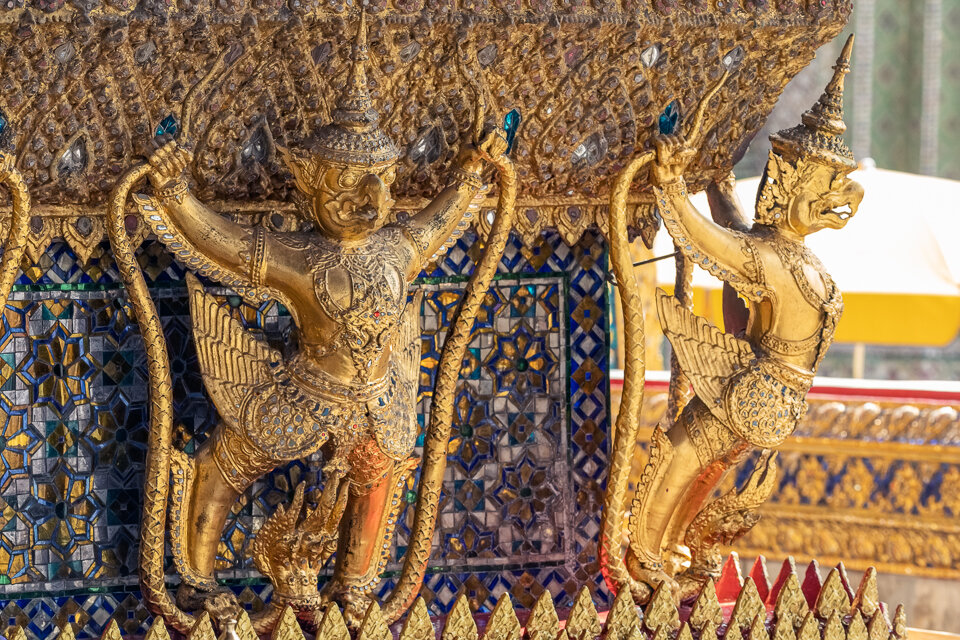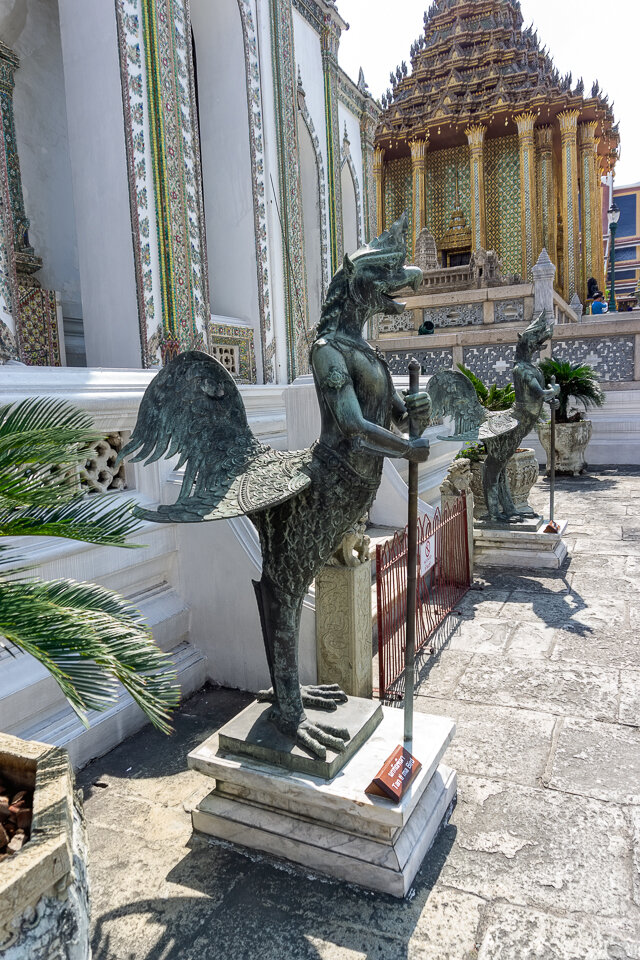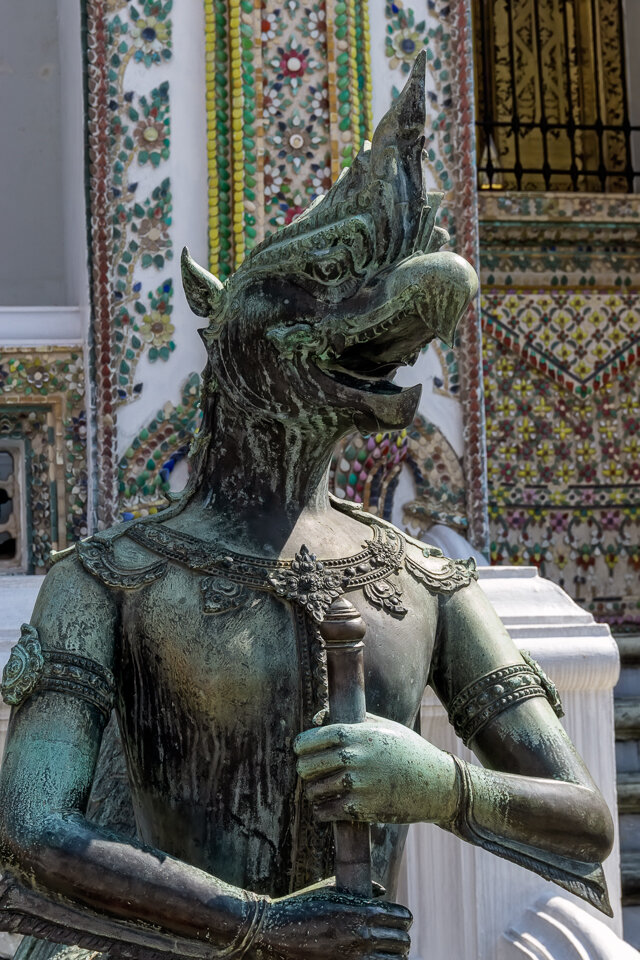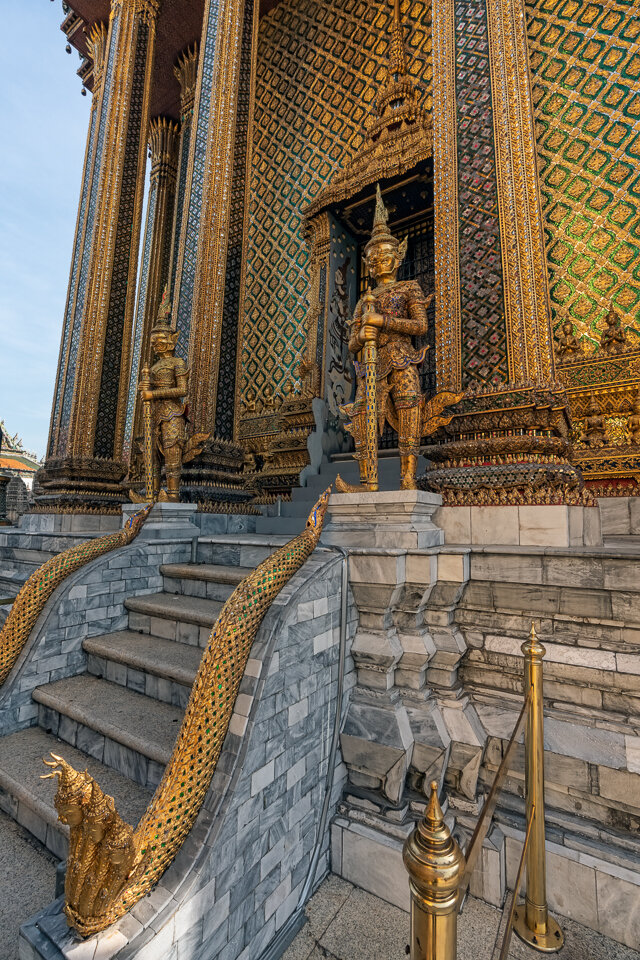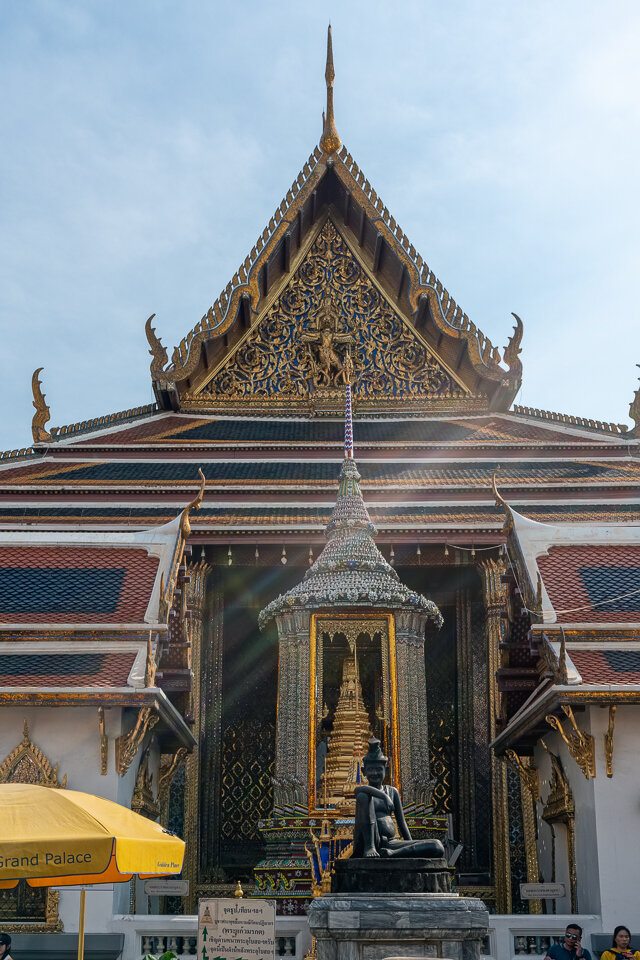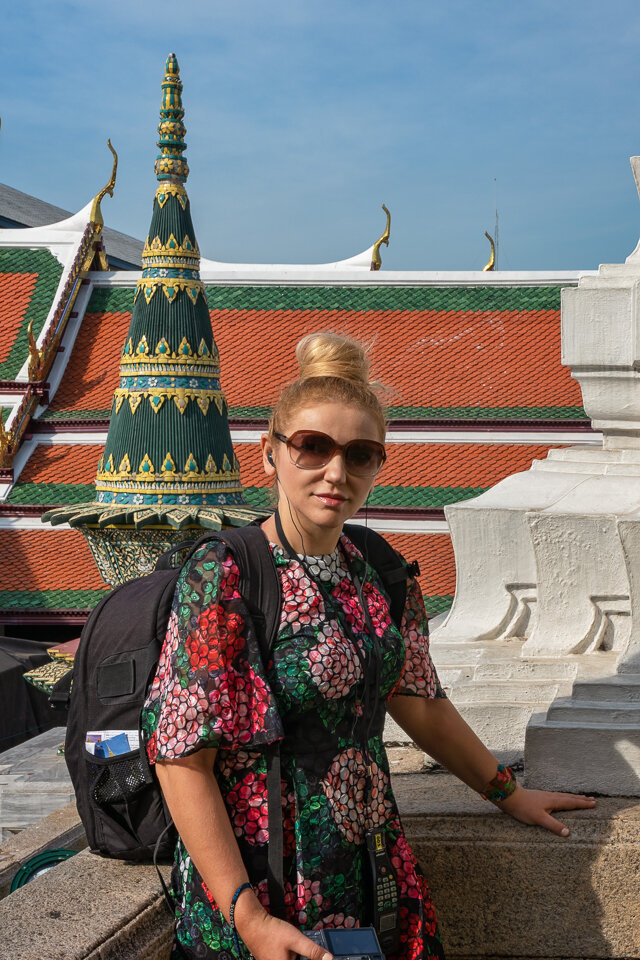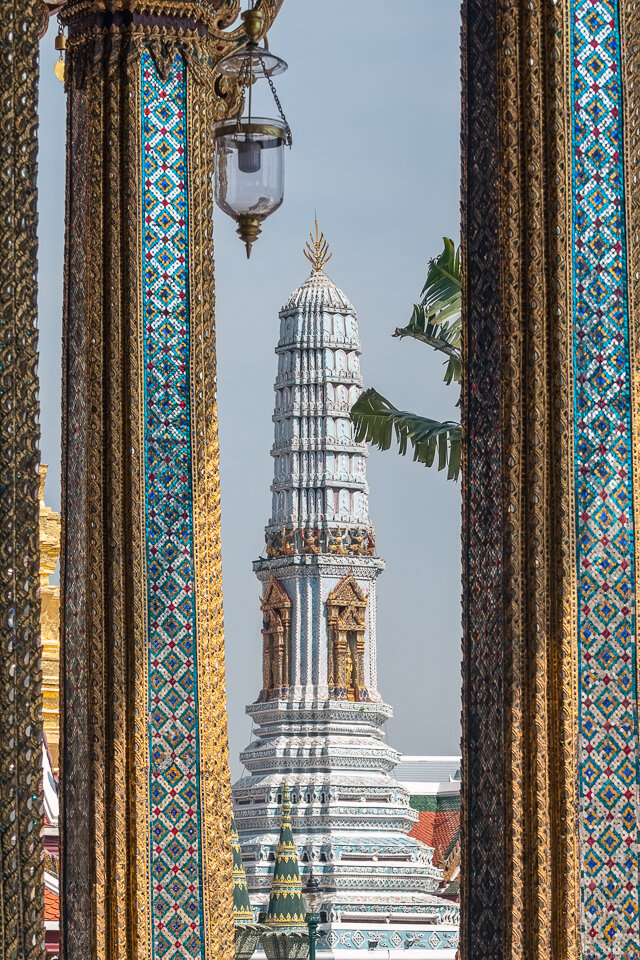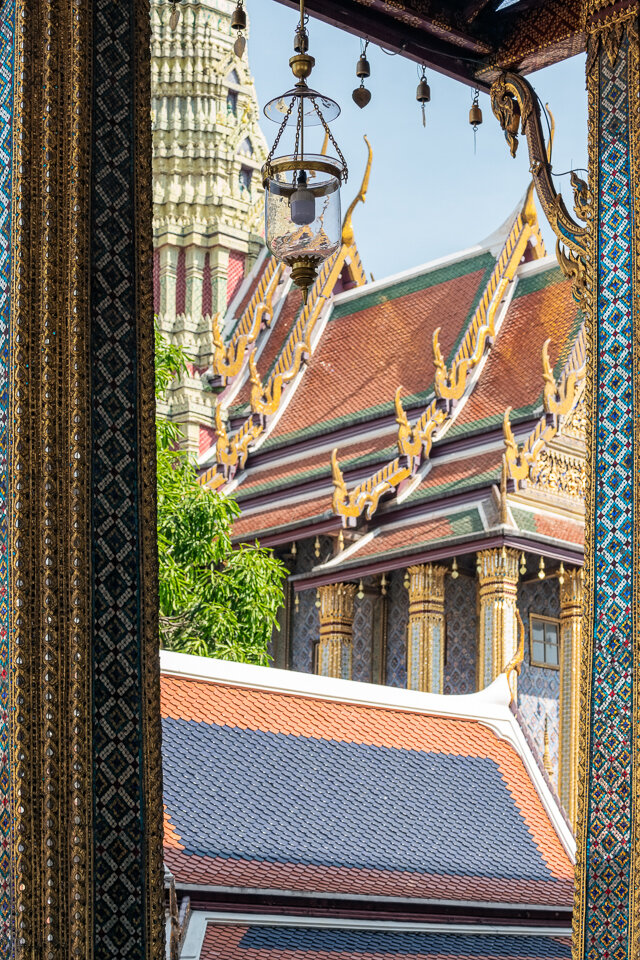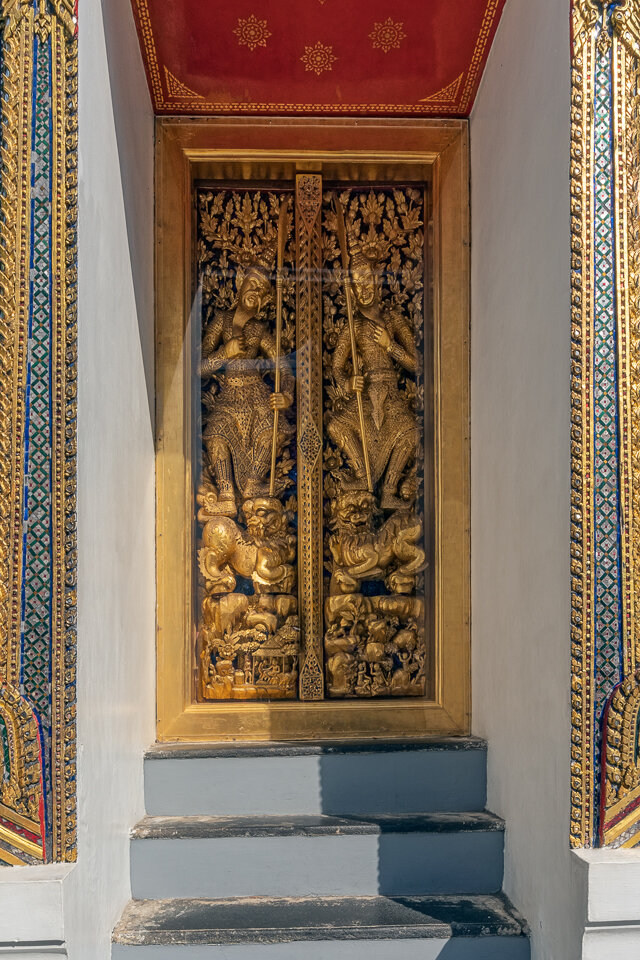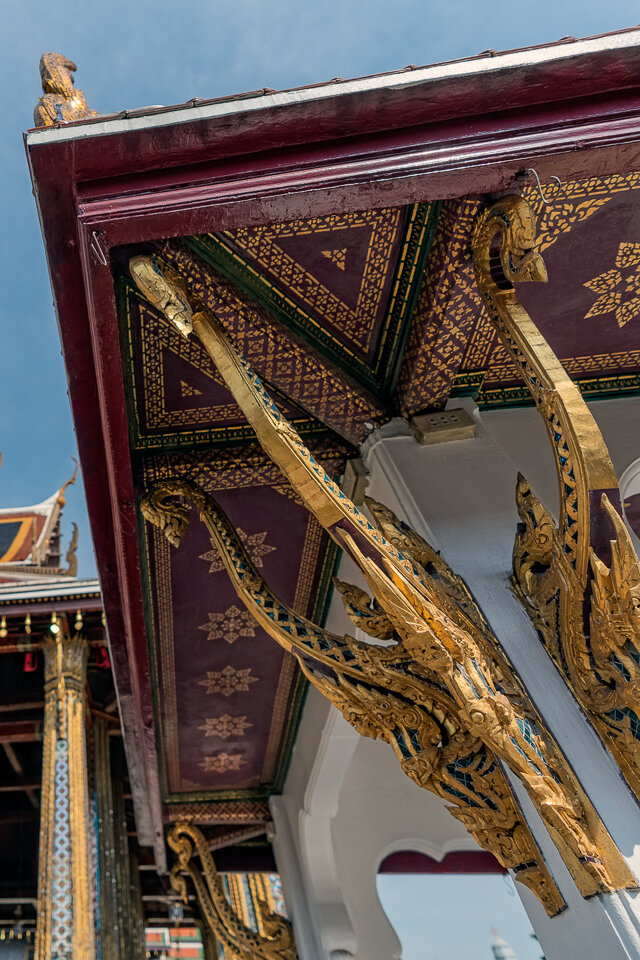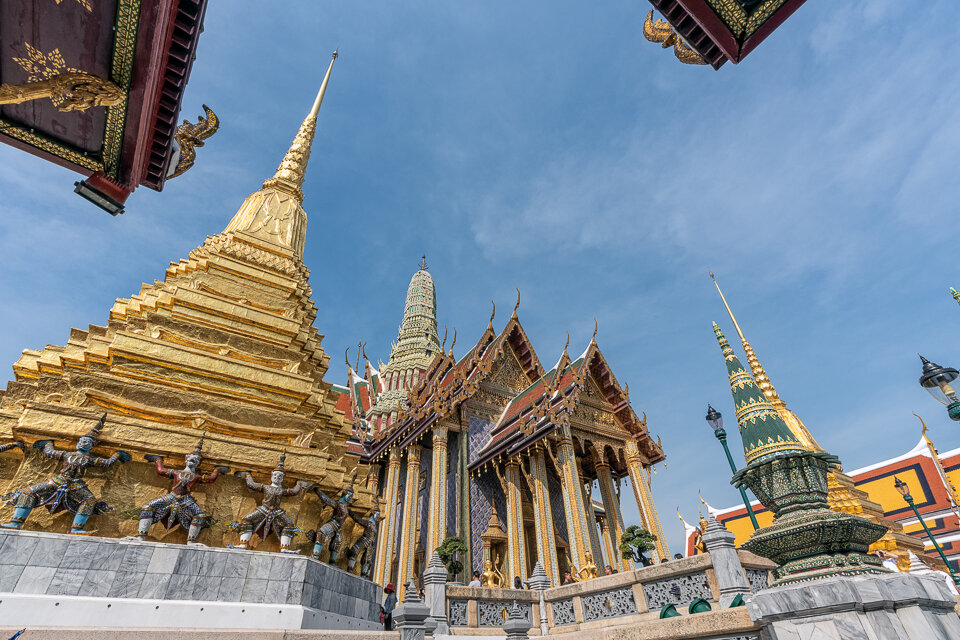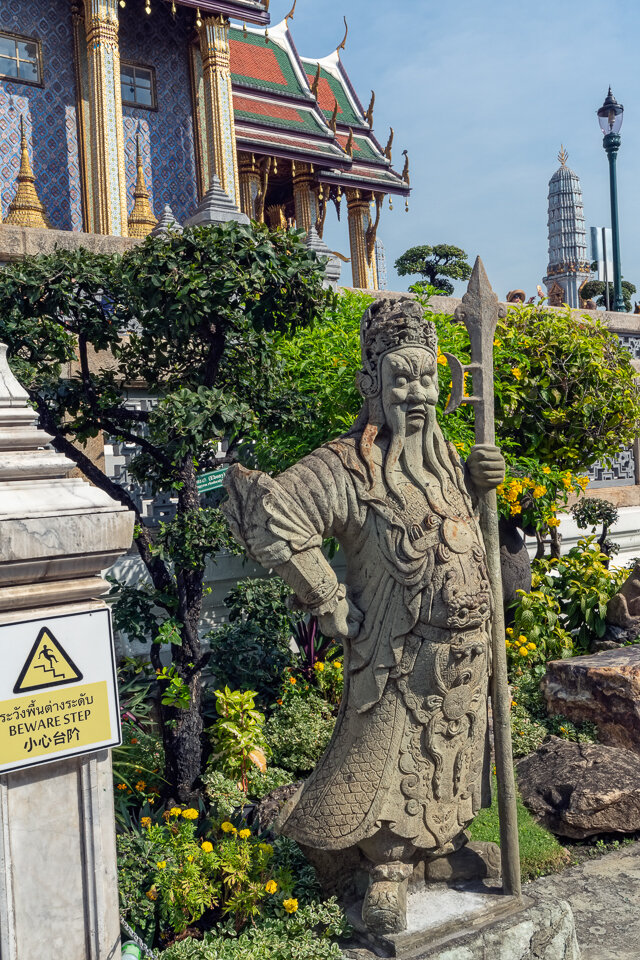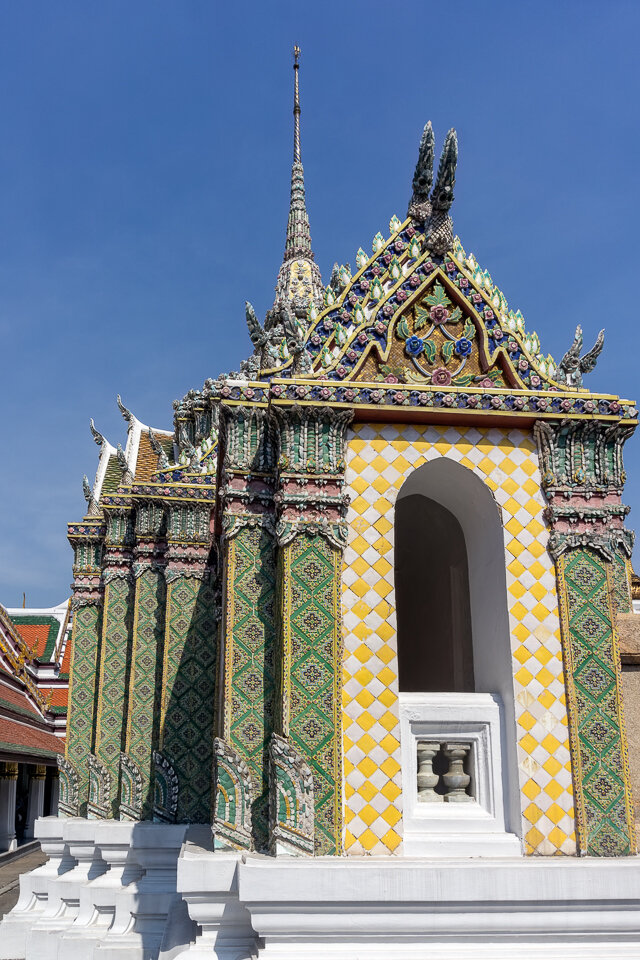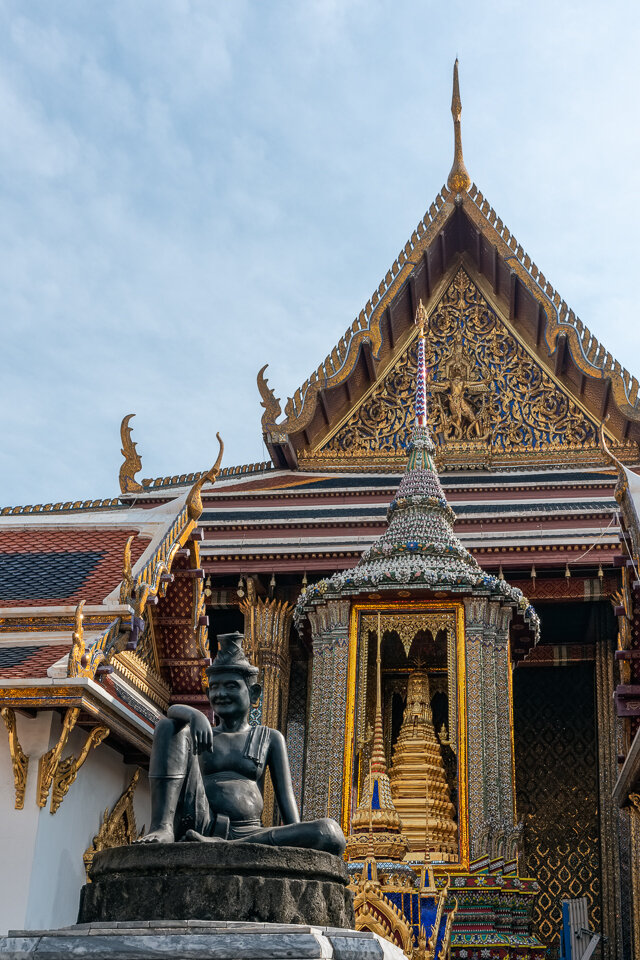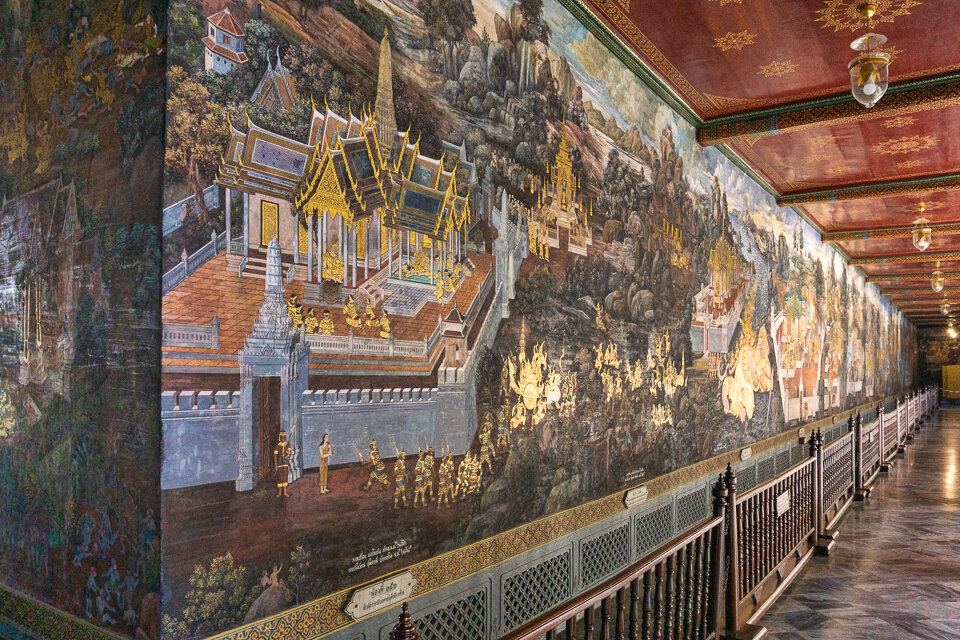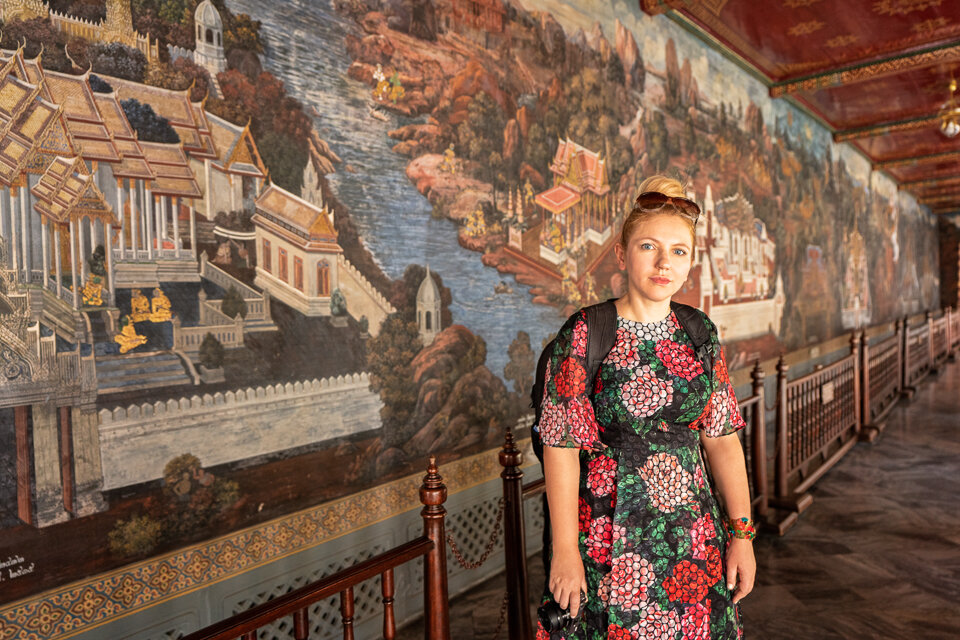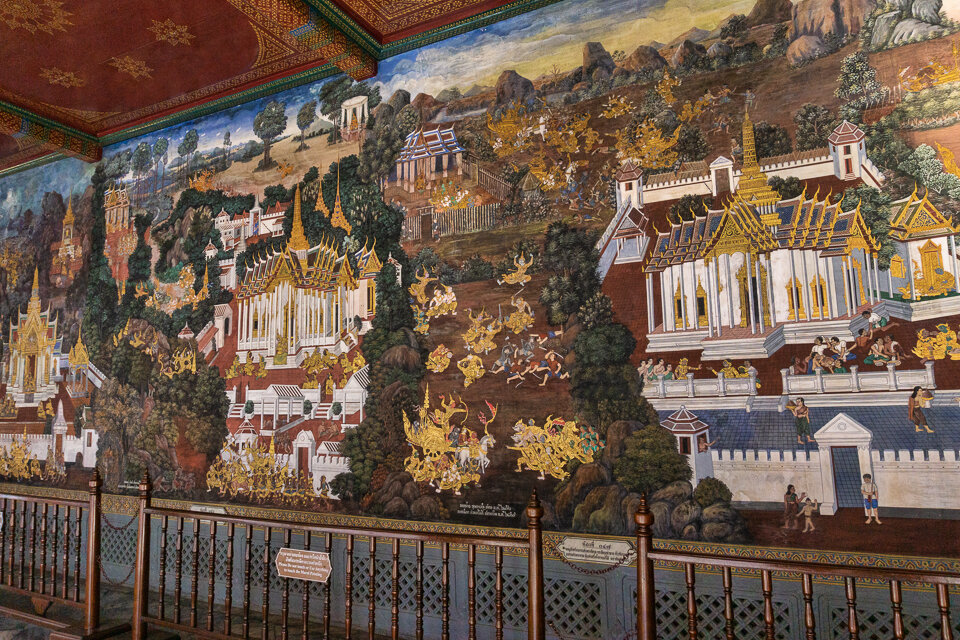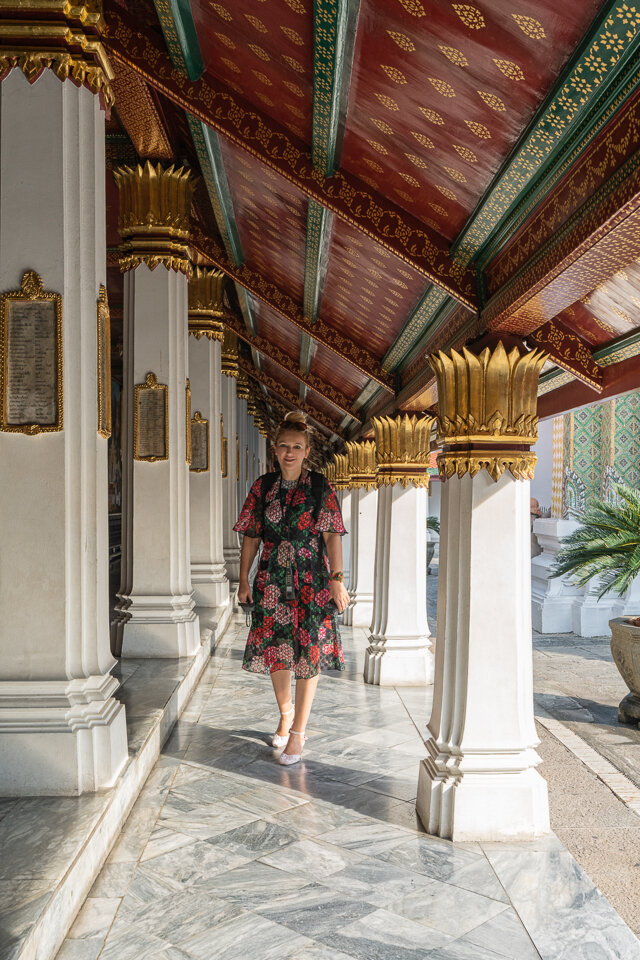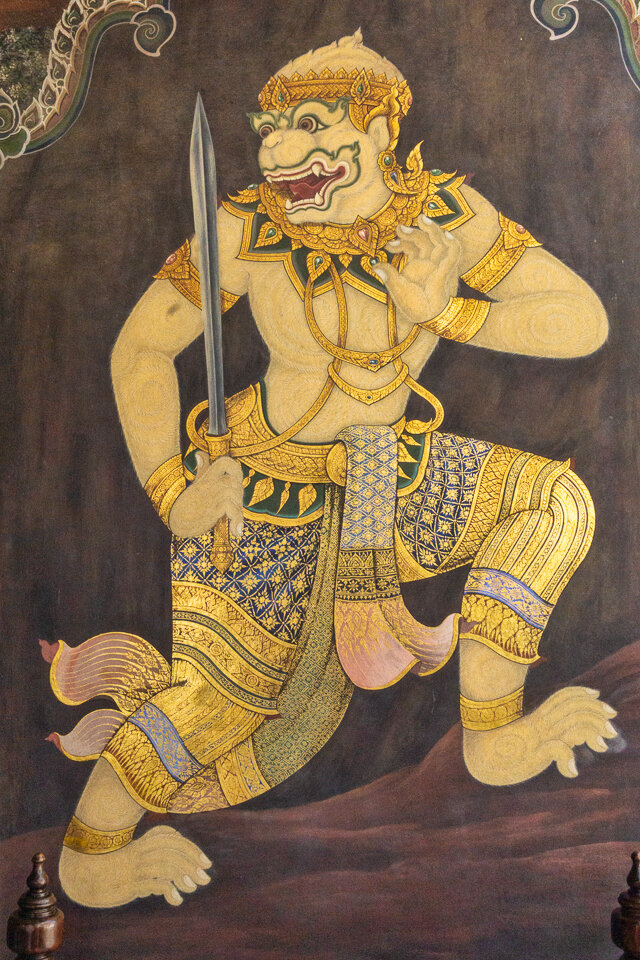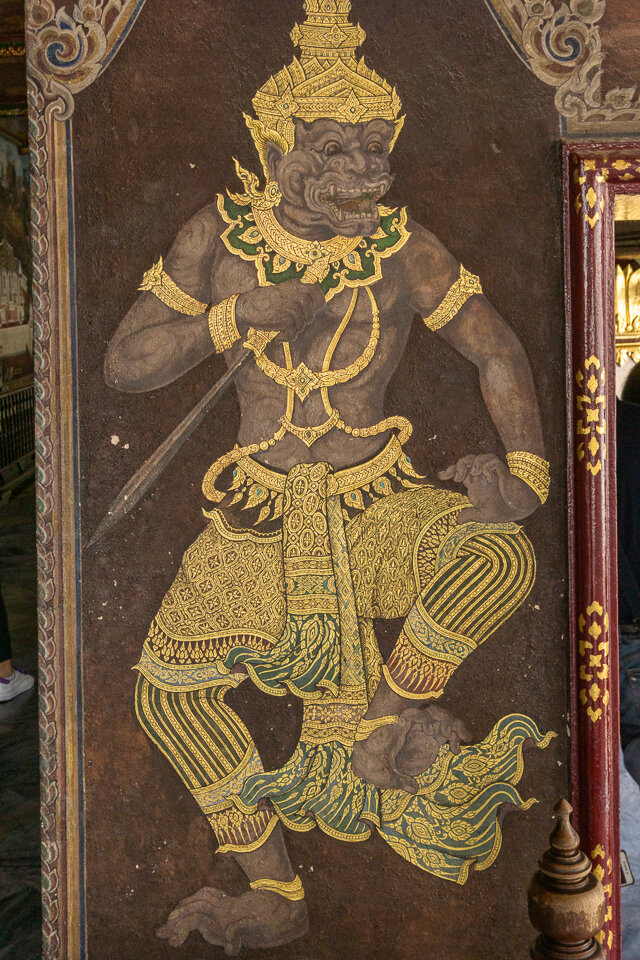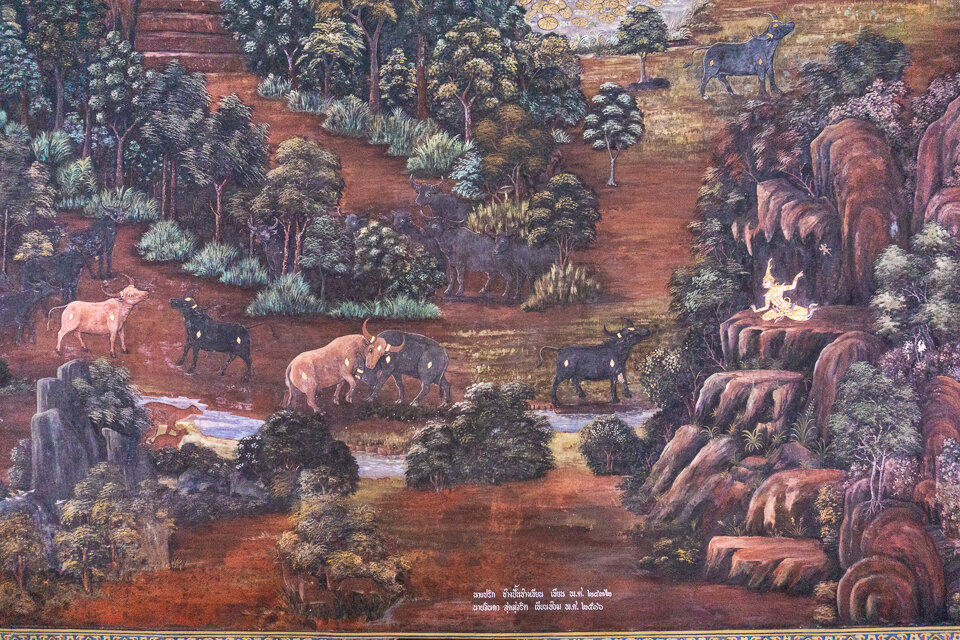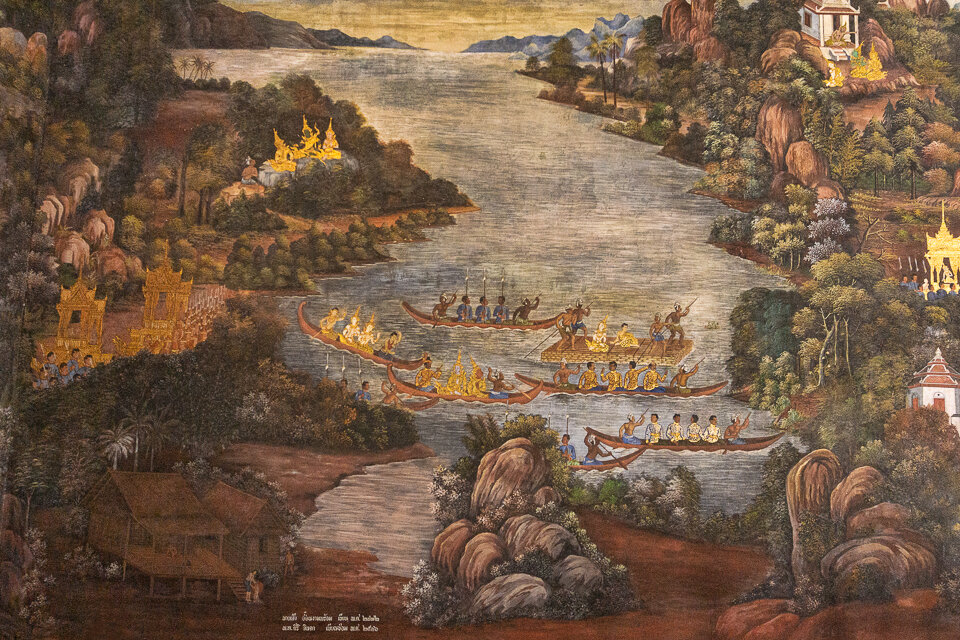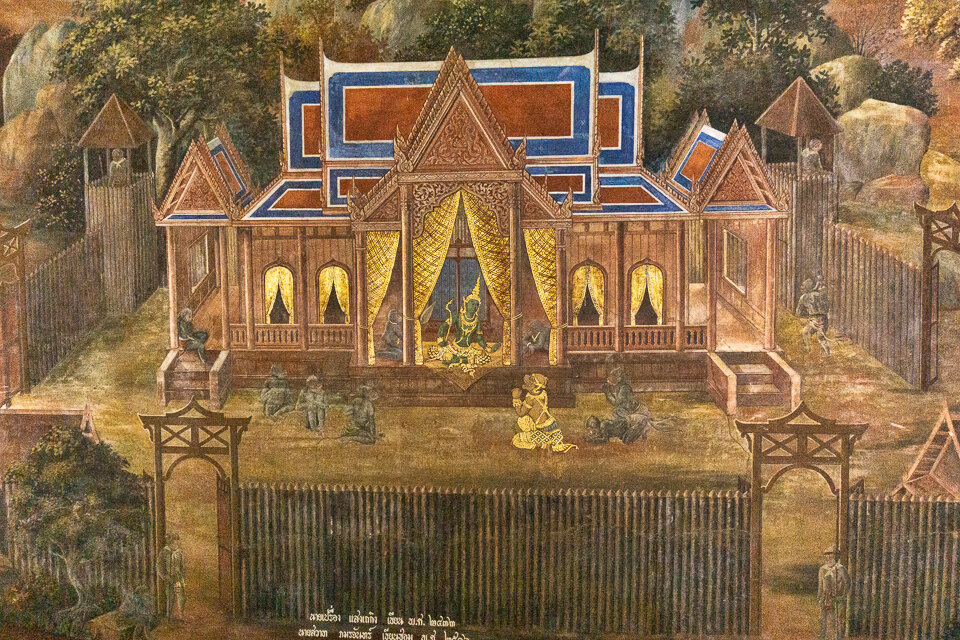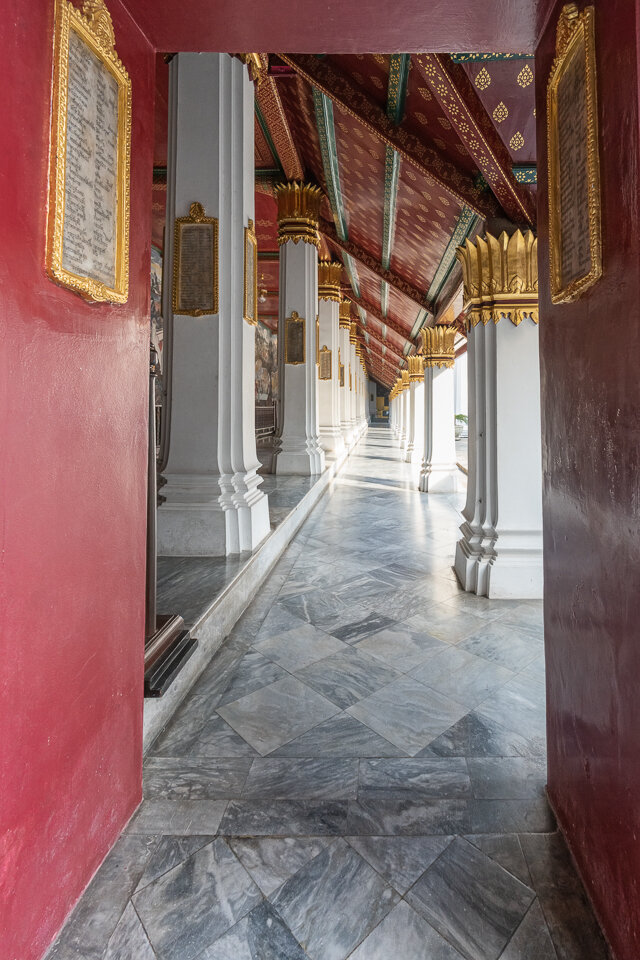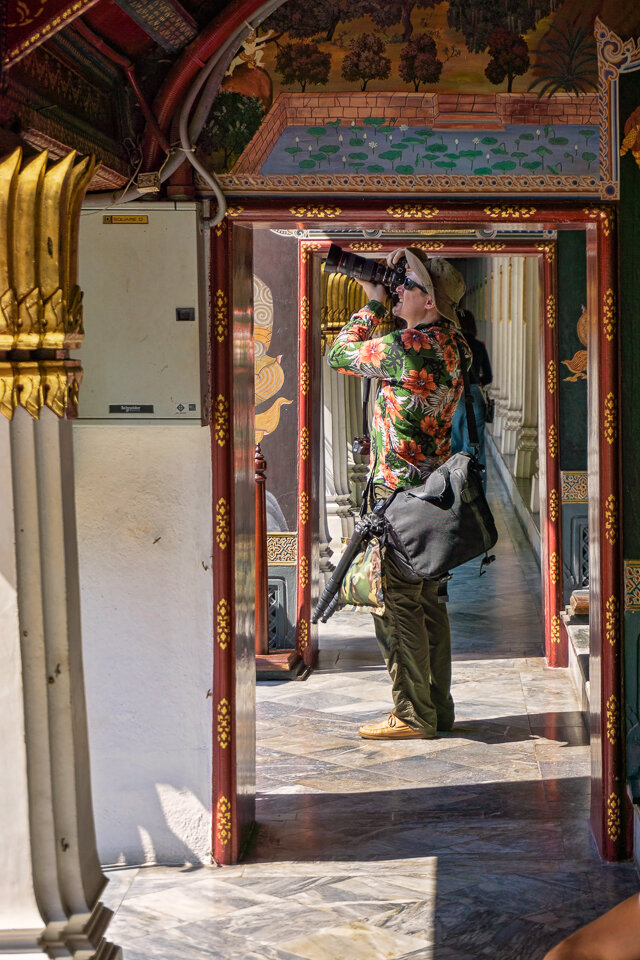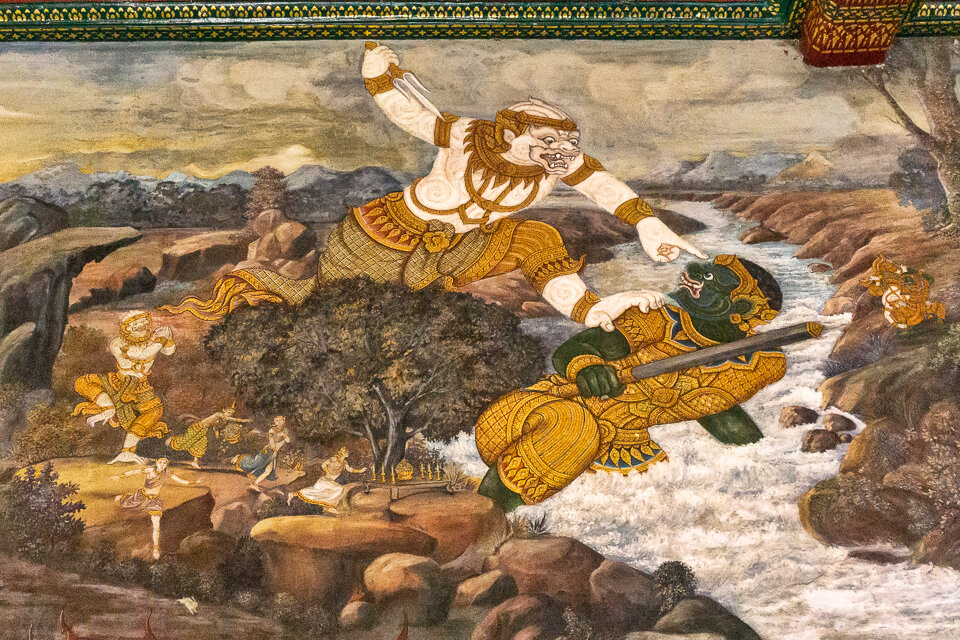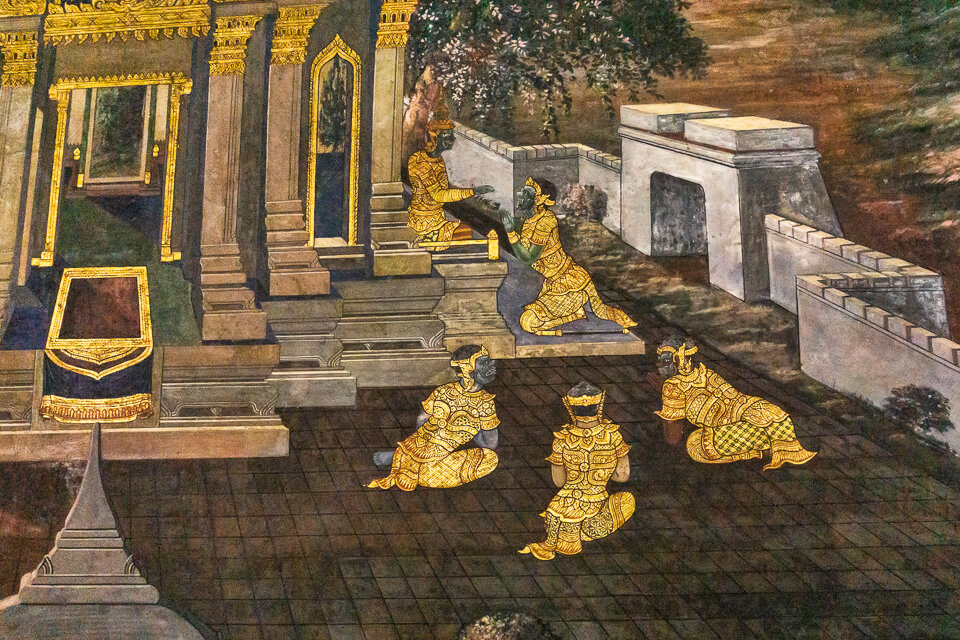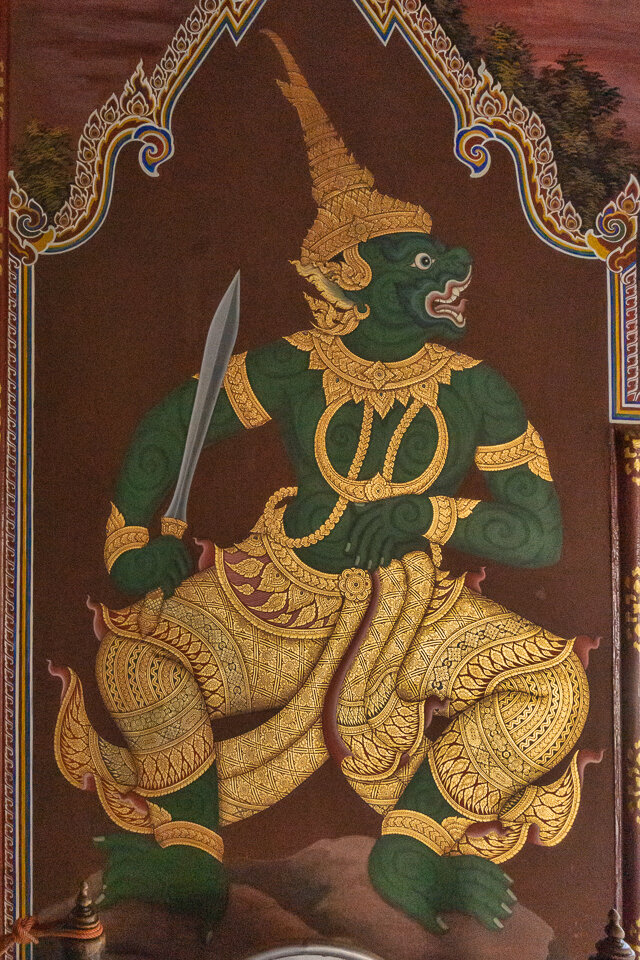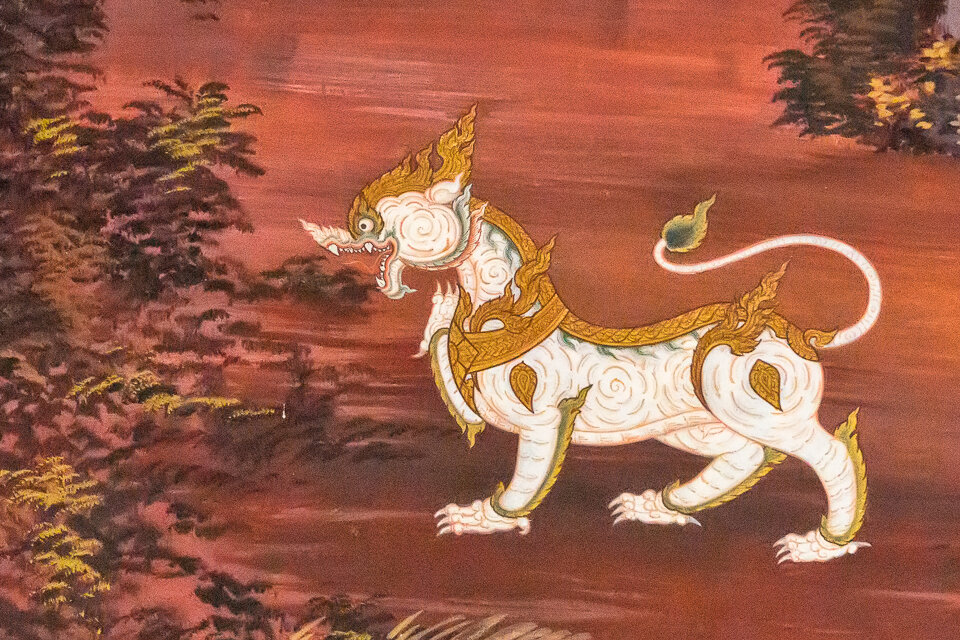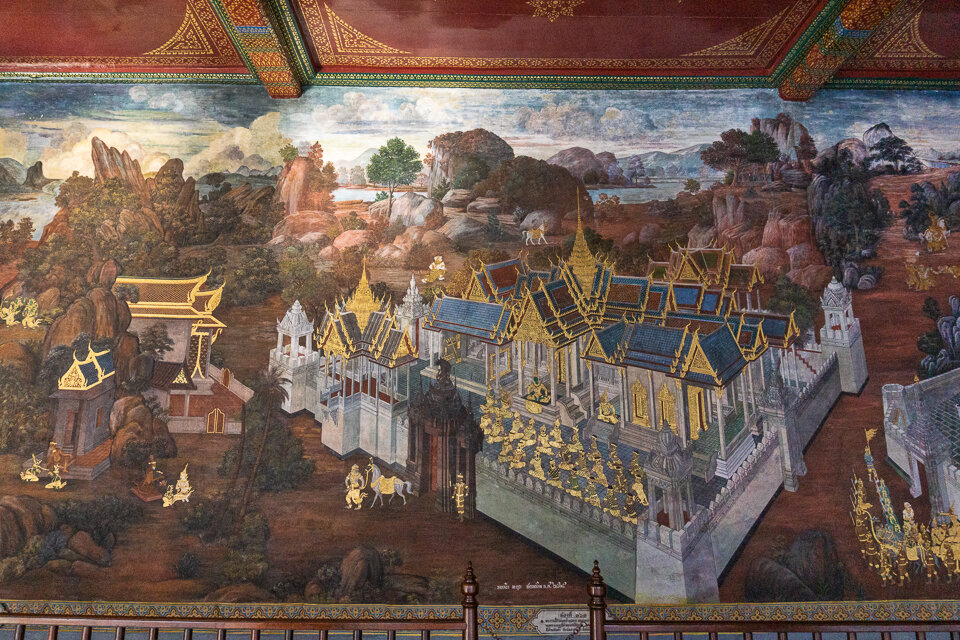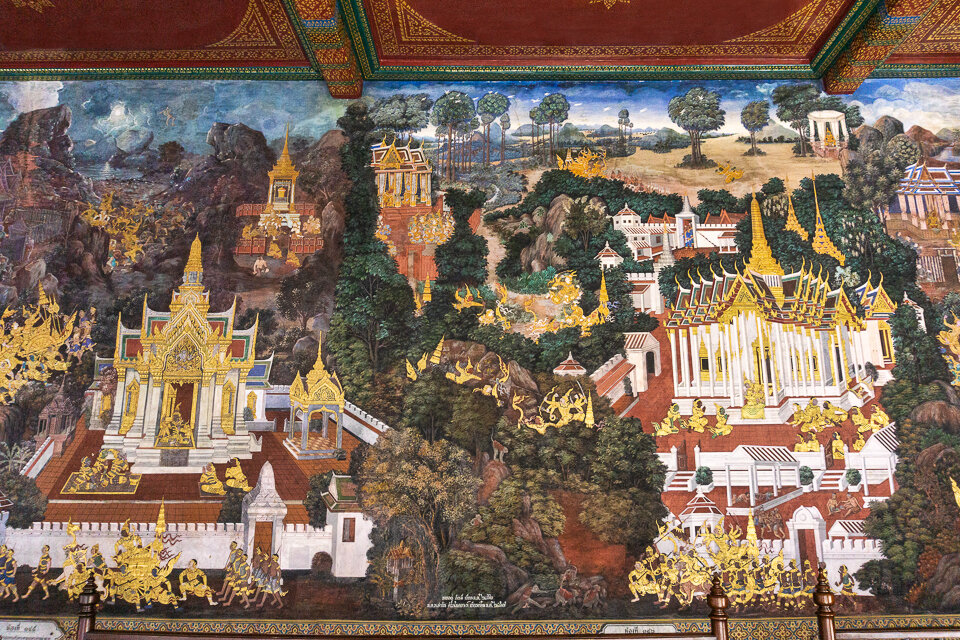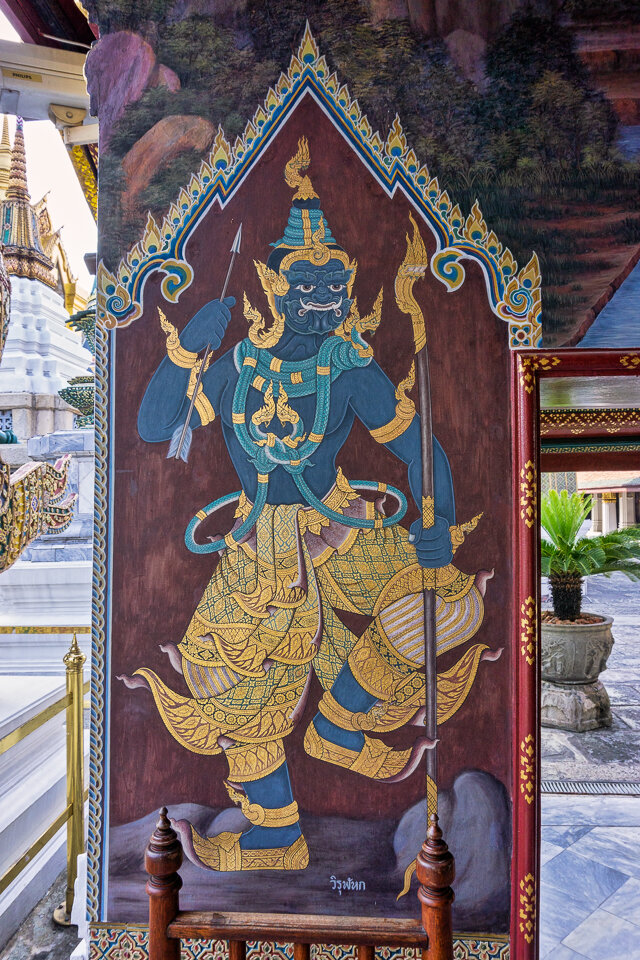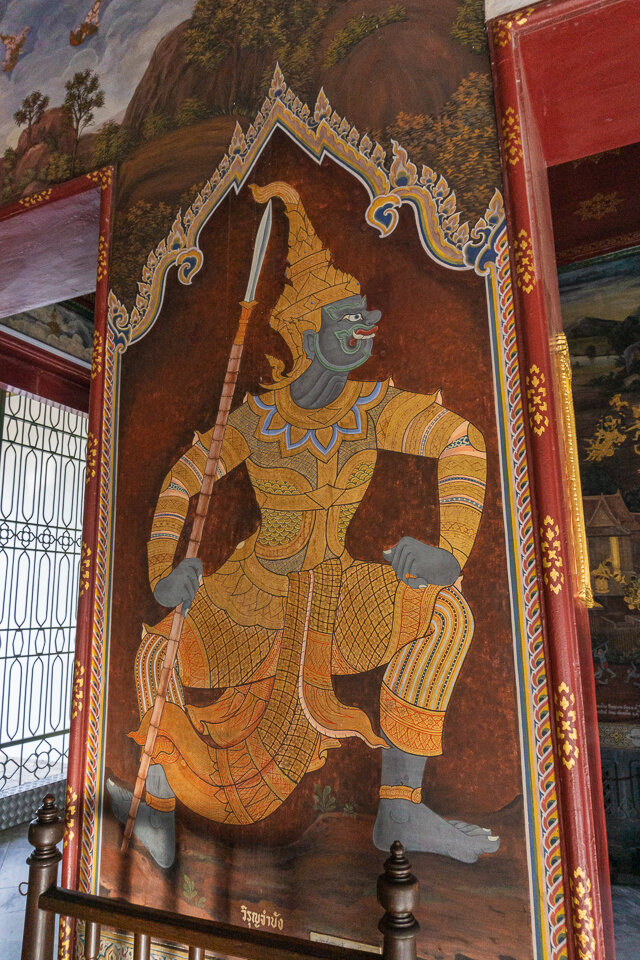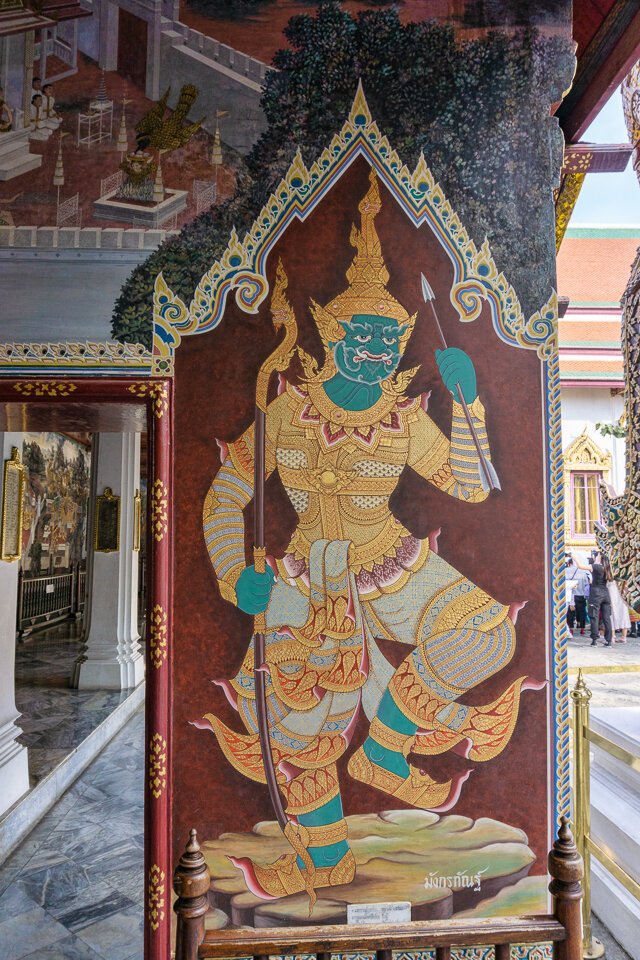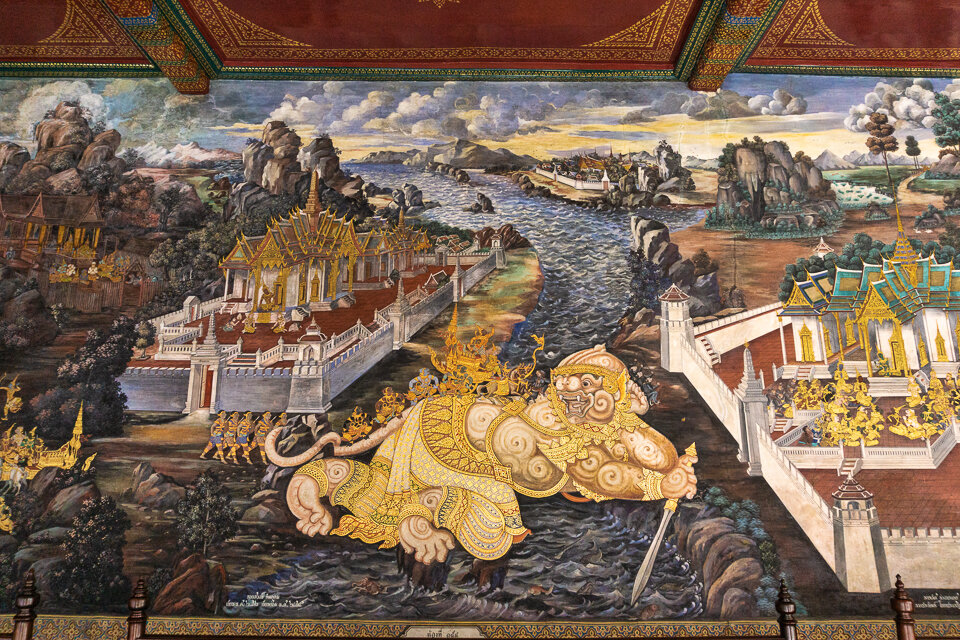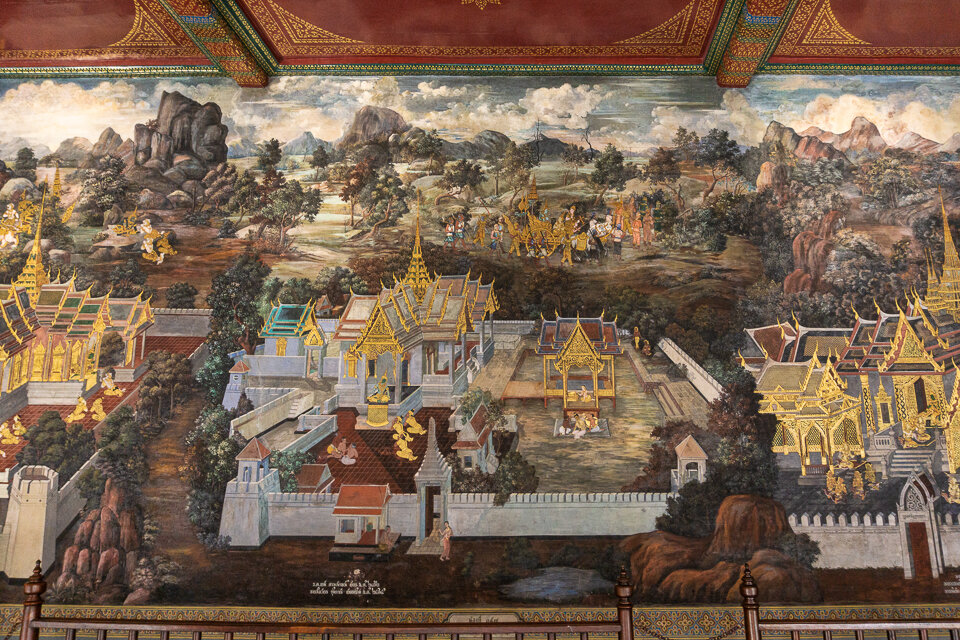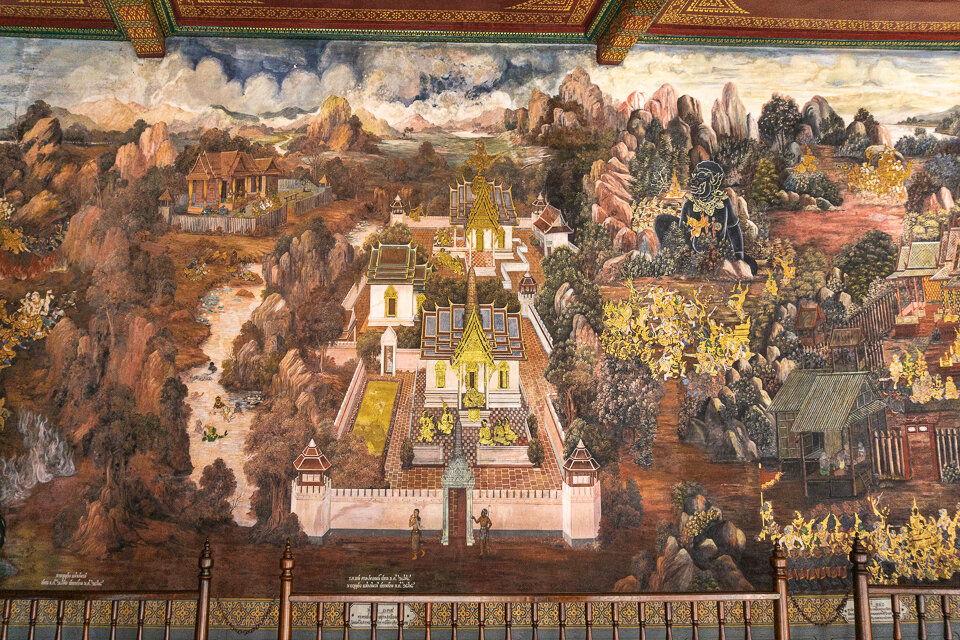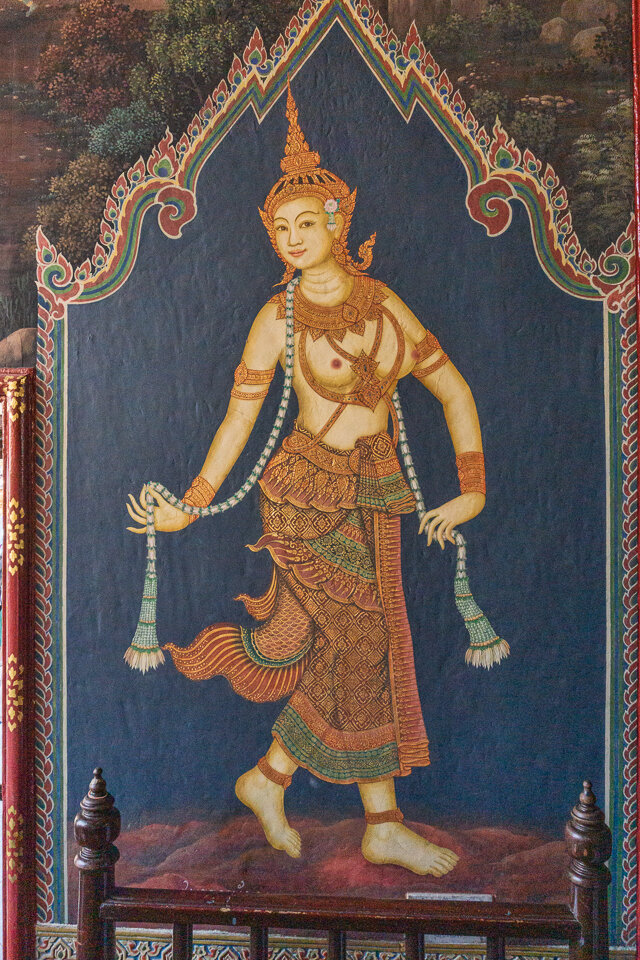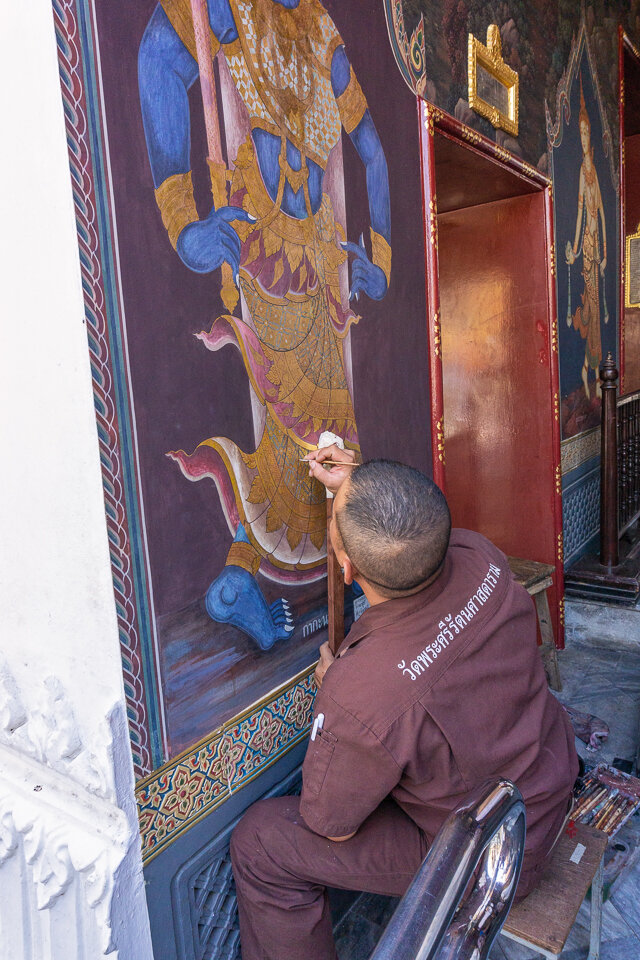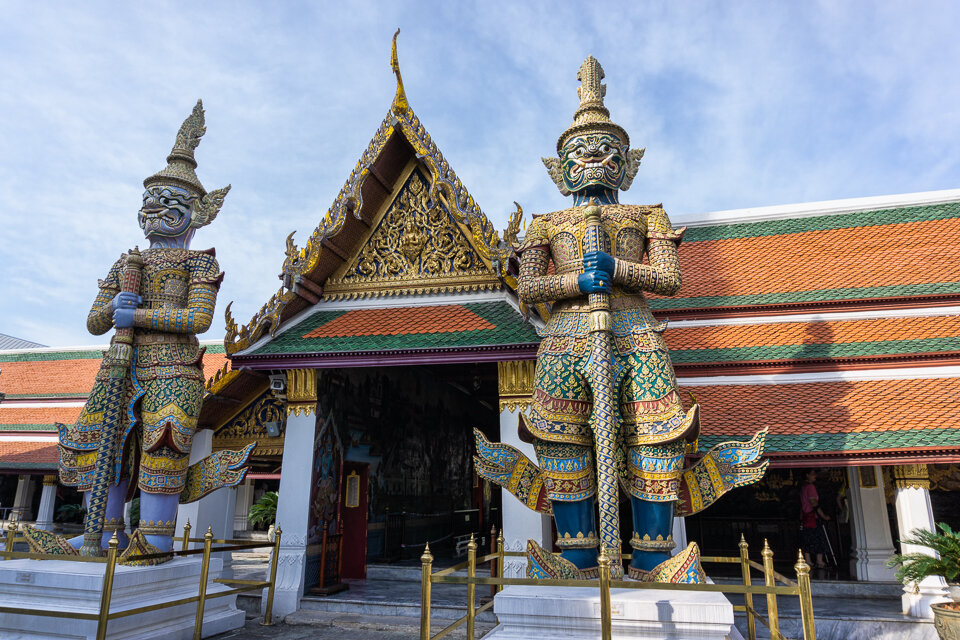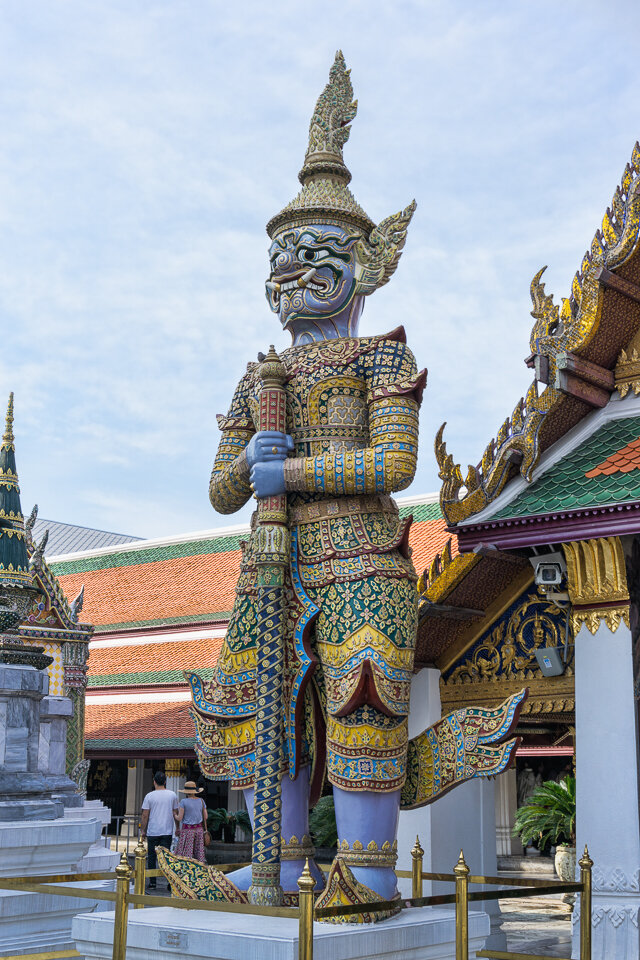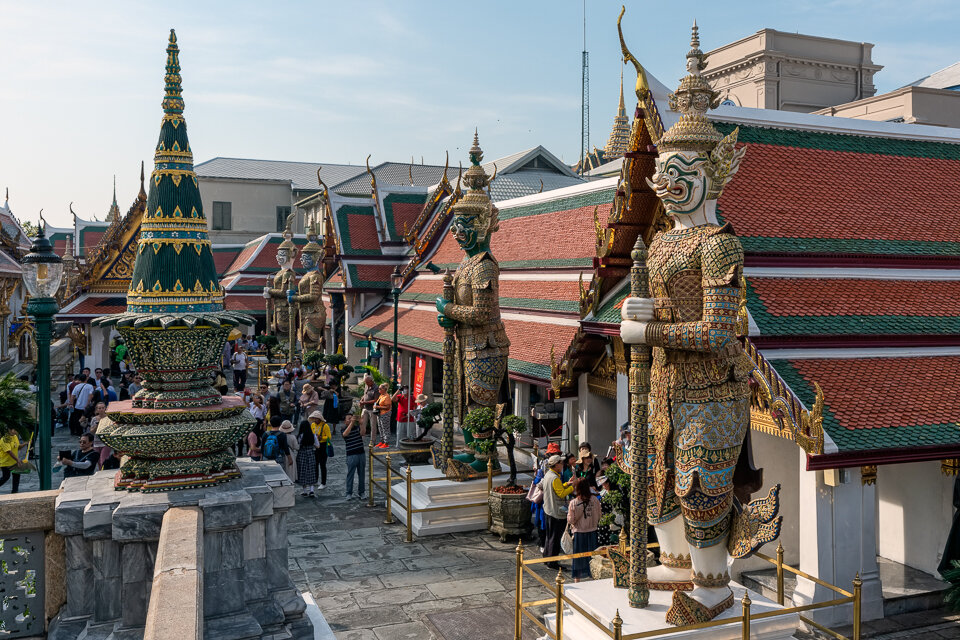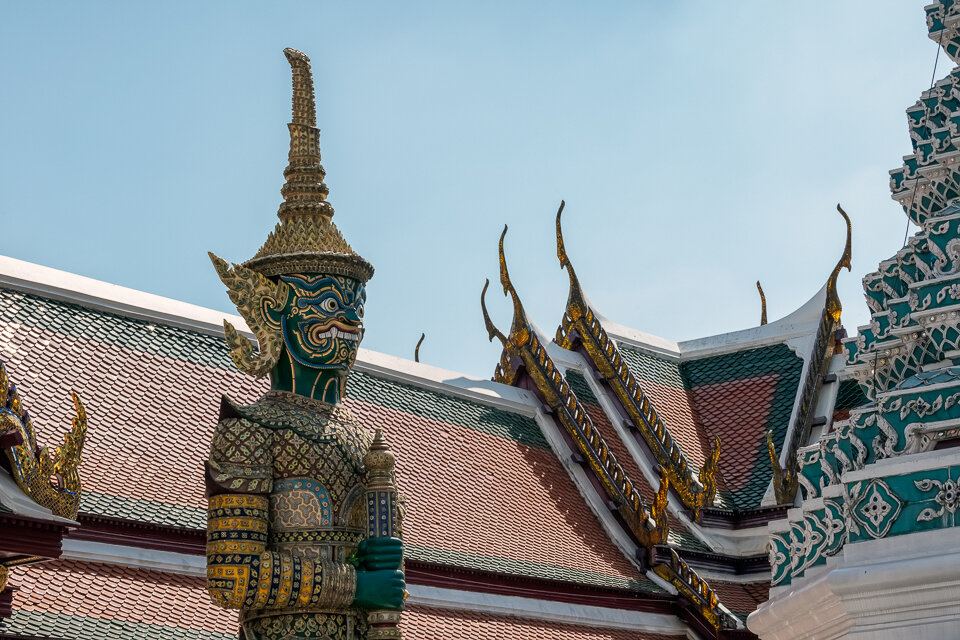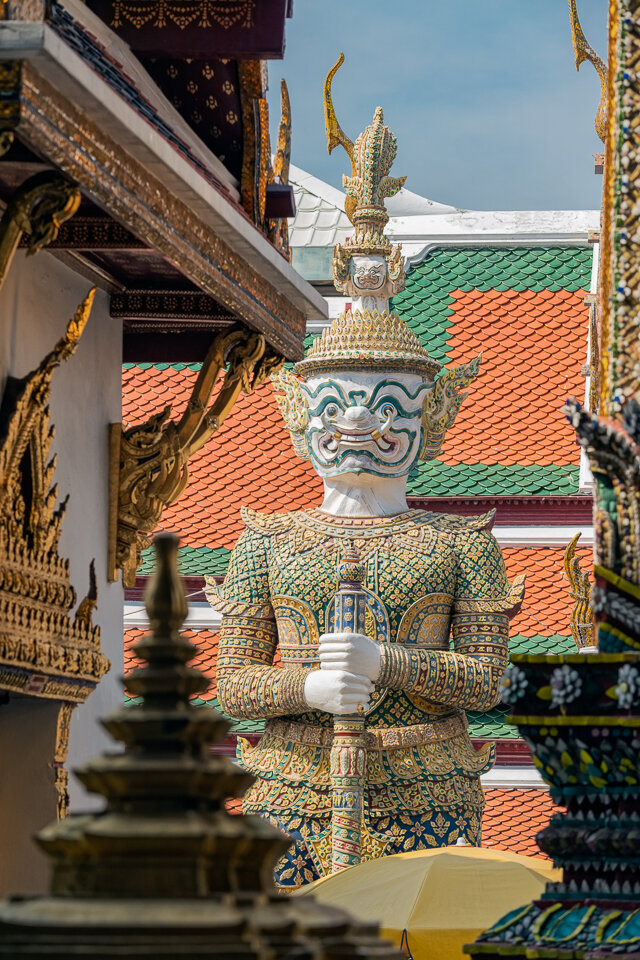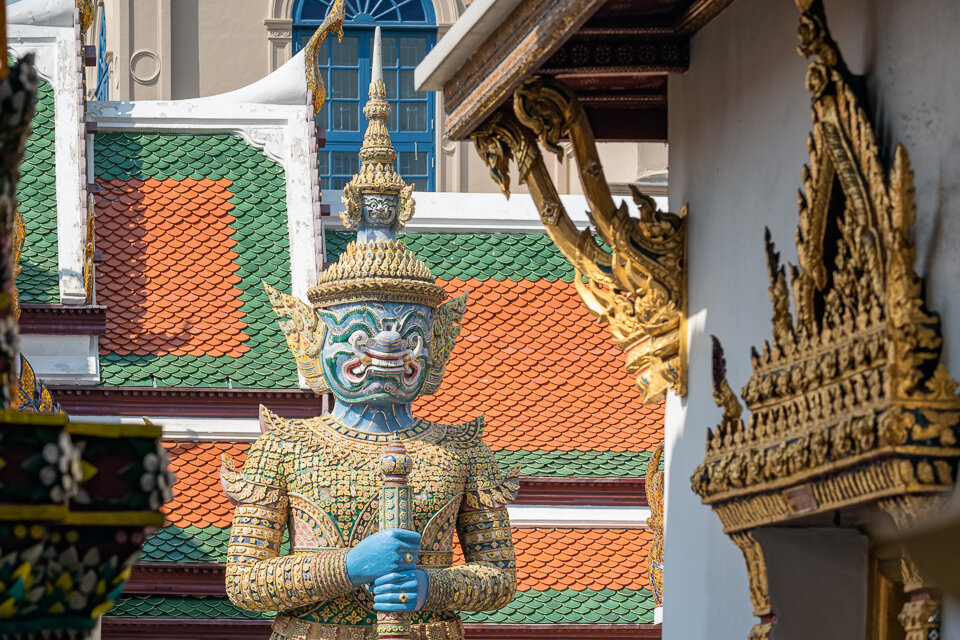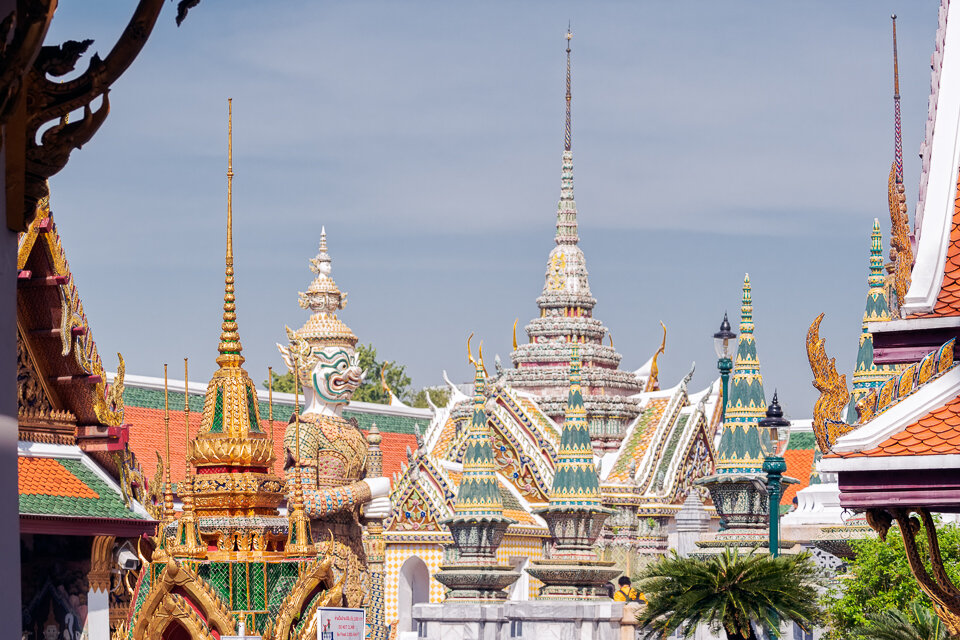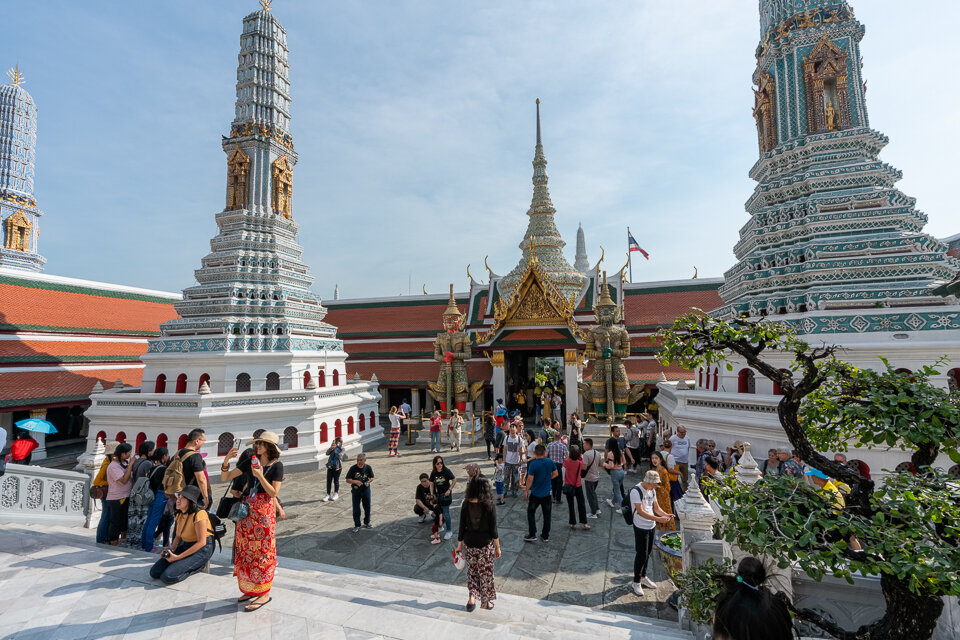After we made a full circle around the walls, and I am pleased to say we had them all to ourselves most of the time, we go inside the temple courtyard, and the first thing that draws our attention is the golden stupa called Phra Si Rattana Chedi. King Rama IV (also known as King Mongkut) erected it in 1855 for enshrining the relics of the Lord Buddha. This stupa has a circular base and a bell shape, which is in the Ceylonese style. Originally it was covered with the whitewash, and the golden tile mosaics were applied to the stupa in the reign of King Rama V.
Po tym, jak obejrzeliśmy wszystkie murale (a większość z nich mieliśmy tylko dla siebie, zero ludzi – bonus porannej wizyty), wchodzimy na dziedziniec świątyni i pierwszą rzeczą, która zwraca naszą uwagę, jest złota stupa zwana Phra Si Rattana Chedi. Król Rama IV (znany również jako Król Mongkut) wzniósł ją w 1855 r dla przechowywania relikwii Buddy. Stupa ma okrągłą podstawę i kształt dzwonu, jest zbudowana w stylu cejlońskim. Pierwotnie jej ściany były tylko bielone, ale za panowania króla Ramy V nałożono na nią złote mozaiki kafelkowe.
Behind Phra Si Rattana, gleams and glitters Phra Mondop, used as the Buddhist library. It was built during the reign of King Rama I in 1789, and it contains a large, beautiful mother-of-pearl inlay book cabinet to house the Buddhist scripture, but we were not allowed inside. The construction of this building is very delicate, and the green and blue mosaic walls contrast beautifully with dazzling gold decorations. The multi-tiered roof resembles the crown of a Thai king. Together with the Pantheon, it may actually be the most beautiful building here if you ask me. It is rich, it is intricate, it is nearly too much and yet, somehow it is still subtle in its exaggeration of richness.
Za stupą Phra Si Rattana lśni i błyszczy budynek Phra Mondop, używany jako buddyjska biblioteka. Został on zbudowany za panowania króla Ramy I w 1789 roku i zawiera dużą, piękną szafkę z intarsją z masy perłowej, w której mieszczą się pisma buddyjskie, ale odwiedzający nie mają możliwości wejścia do środka. Konstrukcja tego budynku jest bardzo delikatna, a zielone i niebieskie połyskliwe mozaikowe ściany pięknie kontrastują z olśniewającymi złotymi dekoracjami. Wielopoziomowy dach przypomina koronę tajskiego króla. Rzem z panteonem być może jest to jeden z najładniejszych budynków w całym kompleksie świątynnym. Jest tu tyle świecidełek, tyle wzorów, tyle kształtów, tyle kapiącego przepychu, a jednak w jakiś sposób wciąż zostawia wrażenie subtelności.
Just as beautiful as Phra Mondop is Prasap Phra Thep Bidom, also knowns as the Royal Pantheon. Blue and gold and just as abundant, it contains life-sized statues of the Chakri kings.
Równie piękny jak Phra Mondop jest Prasat Phra Thep Bidon, znany również jako Panteon Królewski. Jest równie bogato zdobiony, ale dominują na nim kolory niebieski ze zlotem. W środku znajduja naturalnej wielkości posągi królów Chakri (wejście do środka możliwe jest jedynie dwa razy w roku).
Around this building, and in other places, too, there are marvellous gilded statues of mythological creatures, including the half-female, half-lion aponsi.
There are many more mythical creatures on the temple complex, such as:
- Klinnaree – they have the body of a woman but the tail and legs of a swan, they also have exceptional talent in music.
- Garudas – half-eagle, half-men, Garuda is a symbol for the Royal Seal in Thailand
- Naga – an enemy of Garuda, a semi-divine creature with serpent tails and multiple heads, resident of water underworld
Wokół tego budynku ( i nie tylko) znajdują się złocone posągi mitologicznych stworzeń, w tym pół-kbiety, pół- lwice znane jako Aponsi.
W kompleksie świątynnym znajduje się wiele innych mitycznych stworzeń, takich jak:
- Klinnaree - mają ciało kobiety, ale ogon i nogi łabędzia, mają także wyjątkowy talent muzyczny.
- Garuda - pół-orly, pół-ludzie, Garuda to symbol pieczęci królewskiej w Tajlandii
- Naga - wróg Garudy, pół-boskie stworzenie z wężowym ogonem i wieloma głowami, mieszkaniec podziemnego świata wody

